COMING BACK FROM CANCER
Kate Armstrong’s Breast Cancer Journey

Position yourself to F.I.G.H.T.
Feel your best by eating well
Alternative healing methods to consider for whole body restoration













COMING BACK FROM CANCER
Kate Armstrong’s Breast Cancer Journey

Position yourself to F.I.G.H.T.
Feel your best by eating well
Alternative healing methods to consider for whole body restoration












The American Cancer Society estimates that over 20,000 people died of breast cancer in the state of North Carolina in 2023. There were over 67,000 new cases of breast cancer in our state this year and the numbers of deaths and women diagnosed will continue to grow at a rapid pace. It is also estimated that half of the female population over age 30 in the United States, myself included, have been diagnosed with Fibrocystic breast tissue. The breast tissue of someone with this condition has glandular breast tissue which may be dense or rope-like in texture and contain lumps or inflamed nodules. Once women begin annual mammograms over the age of 40, these affected women may notice irregular mammograms, and be sent for further testing to rule out breast cancer.
I experienced my first breast lump at the age of sixteen, when I was first diagnosed with dense breast tissue. Additional mammograms did not start again until I turned 40, and in the last five years, three of my mammograms resulted in findings that warranted additional 3-D imaging and ultrasounds to rule out breast cancer. I will go back in six months to have a suspicious area reviewed again, in hopes the new cysts have not grown or turned into cancer. I am lucky to have health insurance that provides me with a yearly mammogram and a wonderful team of radiologists, doctors and nurses who assist myself and other women with annual screenings. However, many women are not so lucky, as they are diagnosed at much younger ages and some can not afford medical care. It’s safe to say that every one of us at some point this year will know someone who is diagnosed or will die from breast cancer. Our cover model, Katelyn “Kate” Armstrong was only in her thirties when she found a small lump in her breast while taking a shower. Still years away from her annual screenings, she sought medical advice quickly and was diagnosed with breast cancer. She started chemotherapy at the beginning of 2022, followed by a complete mastectomy, and just this past spring, completed her first halfmarathon.
She is currently in remission, but also on a mission, to help other women newly diagnosed with the disease by writing an inspirational guide called “Coming Back From Cancer.” No matter how old you are, if you have dense breast tissue, are under the age of 40, or unable to afford medical care, I urge you to regularly check your breasts for changes, because like Kate did, it may just save your life.
Blessings, Christina Ruotolo-Franey Editor, Her Magazine
Editor, Her Magazine
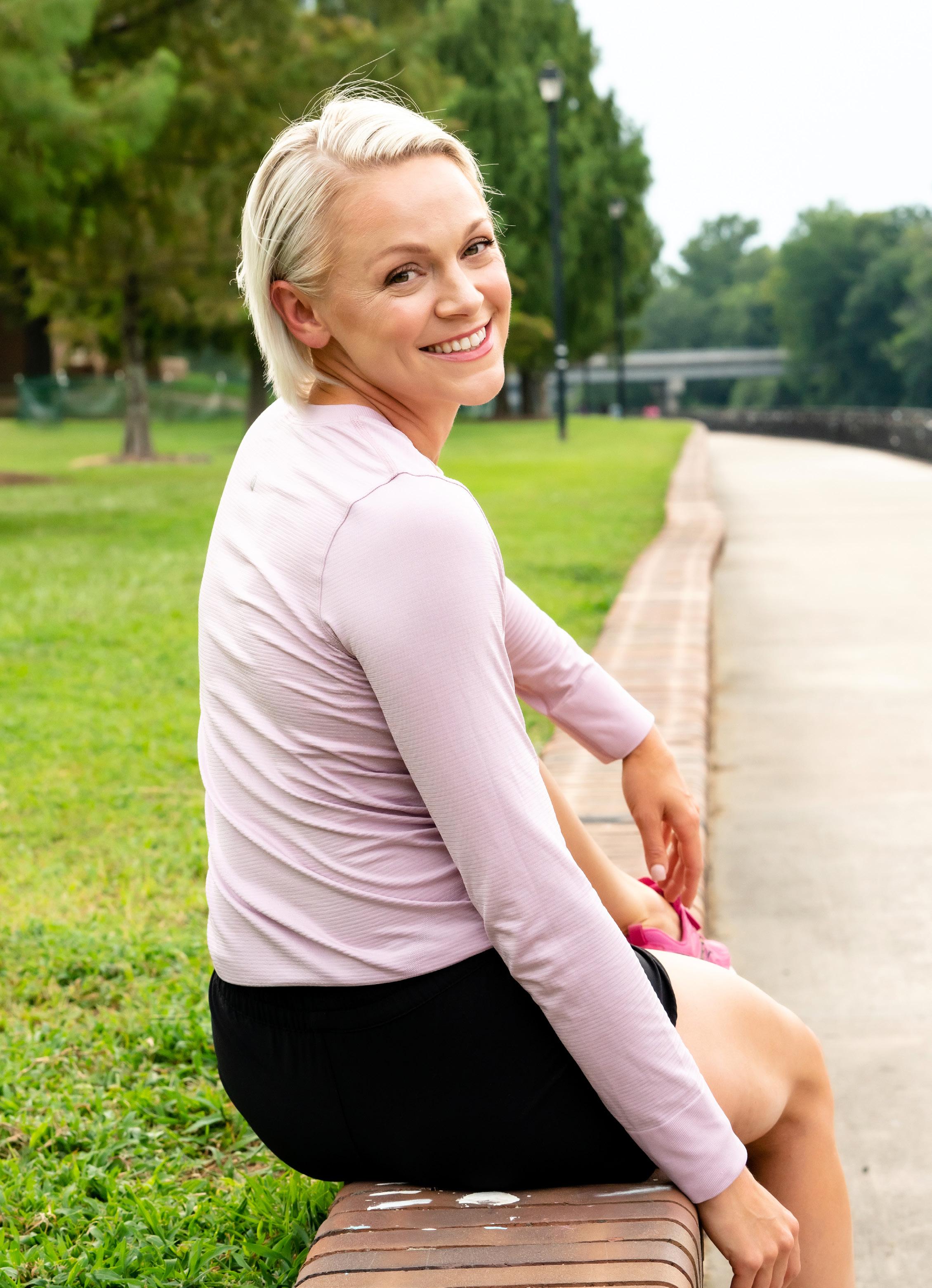
On April 29, 2023, Greenville resident, Katelyn “Kate” Armstrong fnished her frst half-marathon in under two hours. 365 days earlier, she fnished her last round of chemotherapy for breast cancer and could barely walk without needing to catch her breath. The reward at the end of the race was not only a deep breath of relief, but life as well.
Rewind to early November 2021, when Armstrong found a lump in one of her breasts during a breast self-exam in the shower. “The lump felt unusual, but I didn’t want to overreact, so I gave it a few weeks to see if it would go away and it didn’t. I went through the steps of going to my doctor, getting a mammogram, ultrasound and then, fnally, a biopsy,” Armstrong said.
On Monday, December 6, 2021, she received a phone call with the results, which confrmed she had invasive ductal carcinoma; breast cancer. It was in the early stages and had not spread. After her diagnosis, she spent many days in tears, feeling completely betrayed by her body. She met with a surgical oncologist who told her “you’re going to die one day, but not from this,” and Armstrong felt she could truly breathe again and was going to get past this with the love and support of family and friends.
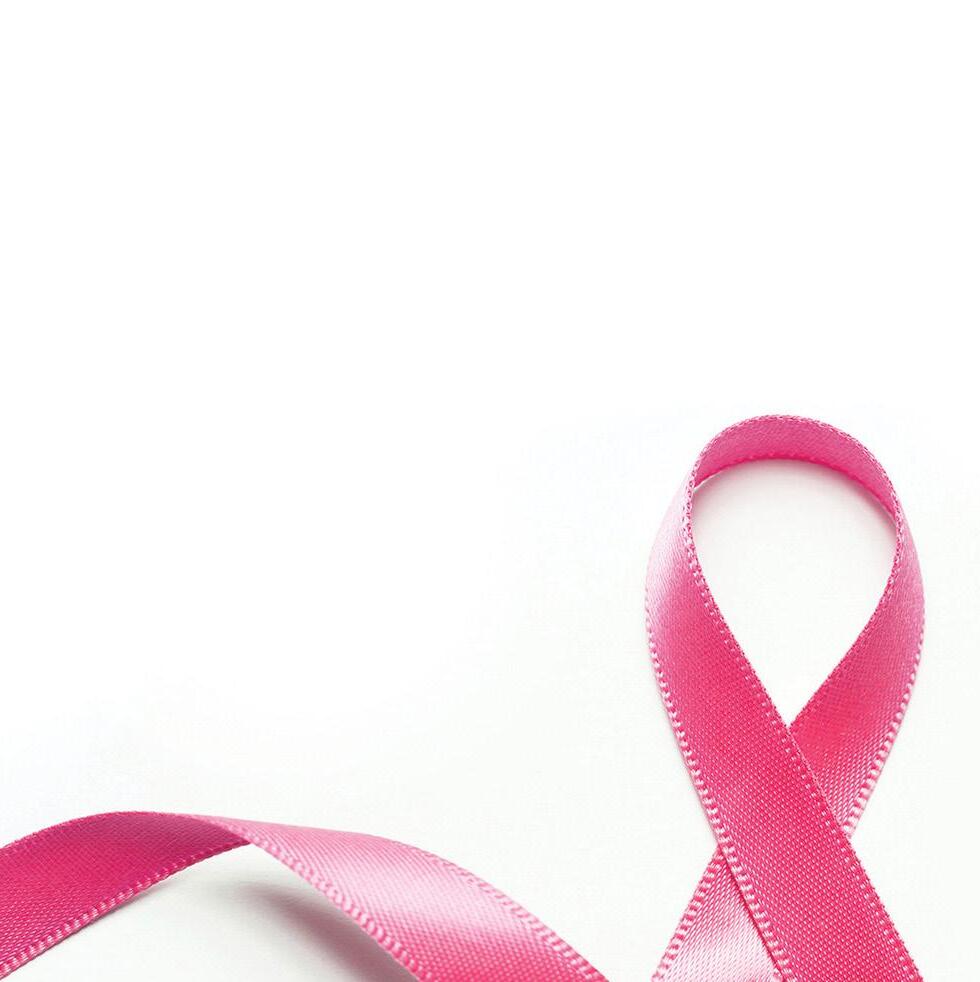
Her chemotherapy lasted from January through April 2022. Some days tested her mental and physical strength to the limit. On good weeks, she worked out, went on date nights, did activities with her son and tried to live as normal a life as possible. “I remember looking in the mirror and seeing a complete stranger. Nothing humbles you faster than losing so much of what makes you you,” Armstrong said.
After chemotherapy, Armstrong started sharing her messages of hope and healing online and was humbled and grateful for the outpouring of love and support she received back. “What I experienced was an outpouring of support, but also connection with other cancer warriors and caregivers.” She started to see that there were many women and men recovering from treatment without appropriate mental health or nutritional support.
Armstrong decided to write a cancer guide called “Coming Back from Cancer” to provide a variety of services for people who are looking for post-
treatment support. The goal of the guide is to help people reduce unwanted thought patterns, improve mental wellness and mindset utilizing therapeutic techniques, and implement a nutrition routine to fuel your body and rebuild energy and strength. Armstrong’s decade long career as a mental health therapist, years of coaching others to improve their nutritional habits and her own experience with cancer, was the springboard for the creation of her new resource guide. The guide is not just for those dealing with cancer, but anyone that might be struggling with rebuilding their lives after trauma.
Armstrong is confdent that once you can get on the other side of healing, magic happens. Then you become more resilient, empowered and self aware. “So many people come out of treatment thinking that they need to feel awful for the rest of their lives, but there really is so much that we can control to give our minds and our bodies the best chance. My goal with my services is to help others grow through their struggles and empower them to create a new life where they can fnd joy,” Armstrong says.
Some of the highlights in the resource guide include how to step out on the ledge and get out of your head. Armstrong’s guide reminds you that “You are worthy, You are resilient, You are powerful, You take action in your life, You are brave, You are courageous, and You are loved! Don’t attempt to go back to the person you were before the storm hit, because the beauty lies on the other side. Confdence doesn’t come from throwing in the towel when it gets hard; it’s not built from taking the easy way out. Confdence and resilience are forged in the fre, they are built in the lowest moments of your life. It is made through pushing
“What I experienced was an outpouring of support, but also connection with other cancer warriors and caregivers.”

beyond the struggles of the narrative in your head and showing yourself that you will overcome your excuses, your pity-party and your self-sabotage,” she says. Even though Armstrong has finished chemotherapy, had a complete mastectomy

and is rebuilding her body, mind, and life after cancer, many people ask her if she is still scared the cancer will return. She responds by telling people they deserve to be free from the grasps that thoughts can have on you. “There are no guarantees in life and you can
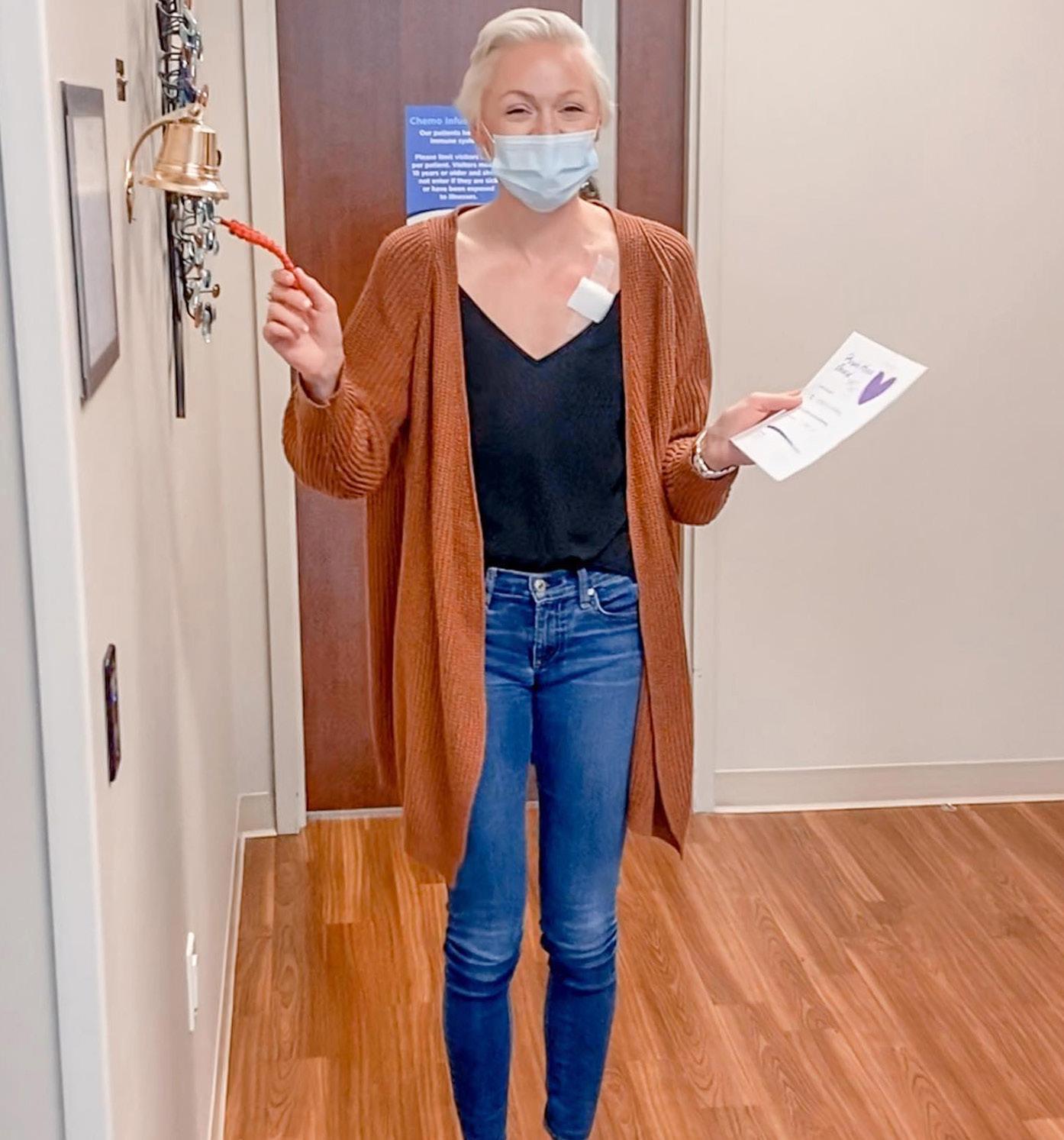
“Positivity starts with you, with your perception regardless of your beliefs or faith. You have the choice to see only the darkness or to seek the light.”
attempt to do all the right things, but you can’t control everything. Just because it’s your worst fear, doesn’t mean it’s going to happen. You have overcome so much and cancer doesn’t deserve any more of your time. Lord knows, we only have so much of it regardless of the C word or not,” Armstrong says.
Armstrong is continuing to run marathons, watch her son, Sam, enjoy kindergarten and help others fnd hope and guidance as they rebuild their lives. She will continue to spread her message for those willing to listen. The word cancer is not a death sentence and what doesn’t challenge you, doesn’t change you. “The mountains in your life are there for you to climb, for you to conquer. The saying that you’ll move mountains is slightly wrong, in my opinion, because the mountain will move you. It will grow you into a stronger, more confdent, mentally tougher version of yourself,” Armstrong says.
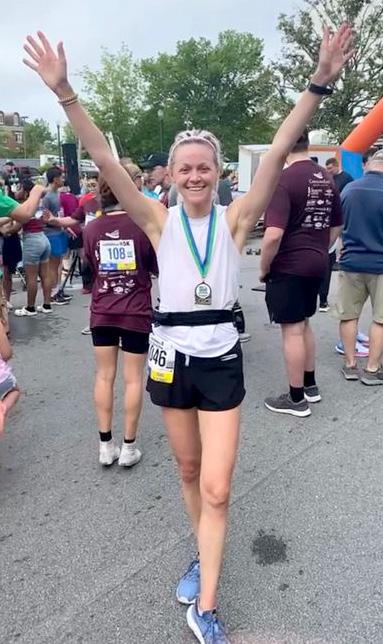
Armstrong is grateful for all her body has endured and overcome since her diagnosis and cancer has been both the worst and the best gift of her life that has taught her more about herself, the world, and has given her a perspective on so many diferent areas of her life that she had never had before. “It brought me my

lowest lows and some of the highest highs. It’s brought me so many incredible people, and it’s brought me the value of peace. It can turn you bitter or it can turn you better. I may have lost my boobs, but I gained a life,” Armstrong says.
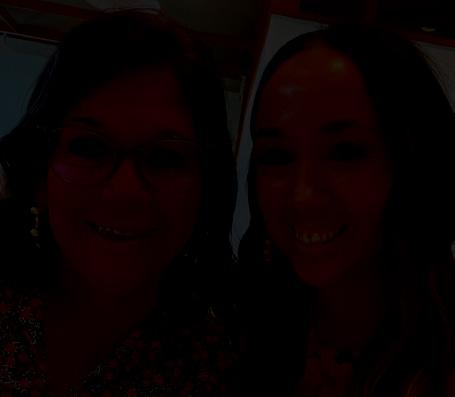


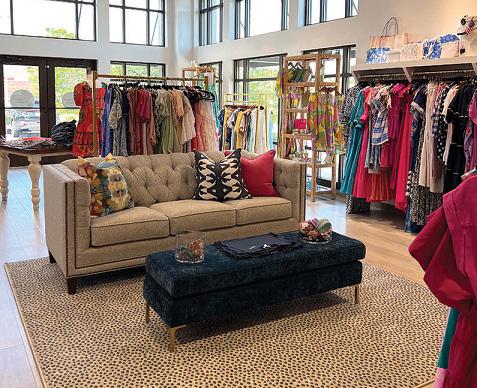

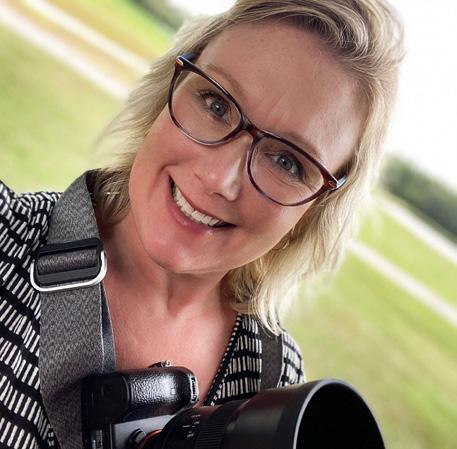
As Armstrong gears up for the next chapter of her life “after cancer”, she wants to remind everyone to stay positive and have faith in the unseen, no matter what challenges may come your way. “Faith is seeing the beauty in the hardest of days and focusing on that; because on those dark days, He is shining through. It’s looking for the glimmer of light, no matter the circumstances around you. We all have a limited number of days here on this planet; cherish every single one of them. Positivity starts with you, with your perception regardless of your beliefs or faith. You have the choice to see only the darkness or to seek the light,” Armstrong says.
 Kris Fay is a photographer based out of Greenville. She and her husband, Patrick, own InBloom Studios. She is a graduate of East Carolina University with a degree in interior design. She has always loved planning spaces and composing designs, and her friends often say she is good at making things pretty. She utilizes her training and experience to capture an image that tells its own story. She specializes in portraits, maternity and frst year, wedding and engagement photos, graduation photos as well as business development photos.
Kris Fay is a photographer based out of Greenville. She and her husband, Patrick, own InBloom Studios. She is a graduate of East Carolina University with a degree in interior design. She has always loved planning spaces and composing designs, and her friends often say she is good at making things pretty. She utilizes her training and experience to capture an image that tells its own story. She specializes in portraits, maternity and frst year, wedding and engagement photos, graduation photos as well as business development photos.
Breast cancer is a cause for concern for millions of women. Each year about 264,000 cases of breast cancer are diagnosed in women in the United States, according to the Centers for Disease Control and Prevention. The Canadian Cancer Society indicates around 28,600 Canadian women will be diagnosed with breast cancer this year. Globally, data from the World Health Organization indicates roughly 2.3 million women were diagnosed with breast cancer in 2020.
One of the more notable symptoms of breast cancer is the presence of a lump in the breast. Though not all lumps are malignant, it’s important that women learn about breast anatomy and lumps as part of their preventive health care routines.

Mount Sinai says that breast lumps can occur at any age in both men and women. Hormonal changes can cause breast
enlargement and lumps during puberty, and boys and girls may even be born with lumps from the estrogen received from their mothers.
It is important to note that the vast majority of breast lumps are benign. The National Institutes of Health says 60 to 80 percent of all breast lumps are non-cancerous. The most common causes of breast lumps are fbroadenomas and fibrocystic changes. Fibroademomas are small, smooth, moveable, painless round lumps that usually afect women who are at an age to have children, indicates the Merck Manual. They are non-cancerous and feel rubbery.
Fibrocystic changes are painful, lumpy breasts. This benign condition does not increase a woman’s risk for breast cancer. Symptoms often are worse right before one’s menstrual period, and then improve after the period begins.
Breast cancer affects millions of women each year, but breast cancer also can be diagnosed in men. Each year in the United States, about 2,400 cases of breast cancer are diagnosed in men, according to the Centers for Disease Control and Prevention. Roughly 270 men will be diagnosed with breast cancer this year in Canada, according to the Canadian Cancer Society. Macmillan Cancer Support says men have a small amount of breast tissue behind their nipples, where breast cancer potentially can develop. Breast tissue in boys and girls is the same until puberty, when girls start to develop more. Signs of male breast cancer include a lump or swelling in the breast, redness or flaky skin in the breast, irritation or dimpling of the skin around the nipple, nipple discharge, or pulling in or pain of the nipple, states the CDC.
DID YOU KNOW
Additional factors can contribute to the formation of lumps. Breast cysts are fuid-flled sacs that likely go away on their own or may be aspirated to relieve pain. Complex cysts may need to be removed surgically. Sometimes cysts also may form in milk ducts throughout the breasts.










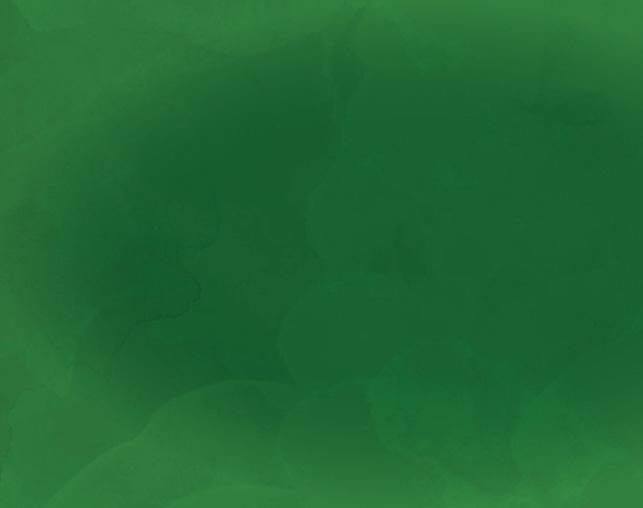
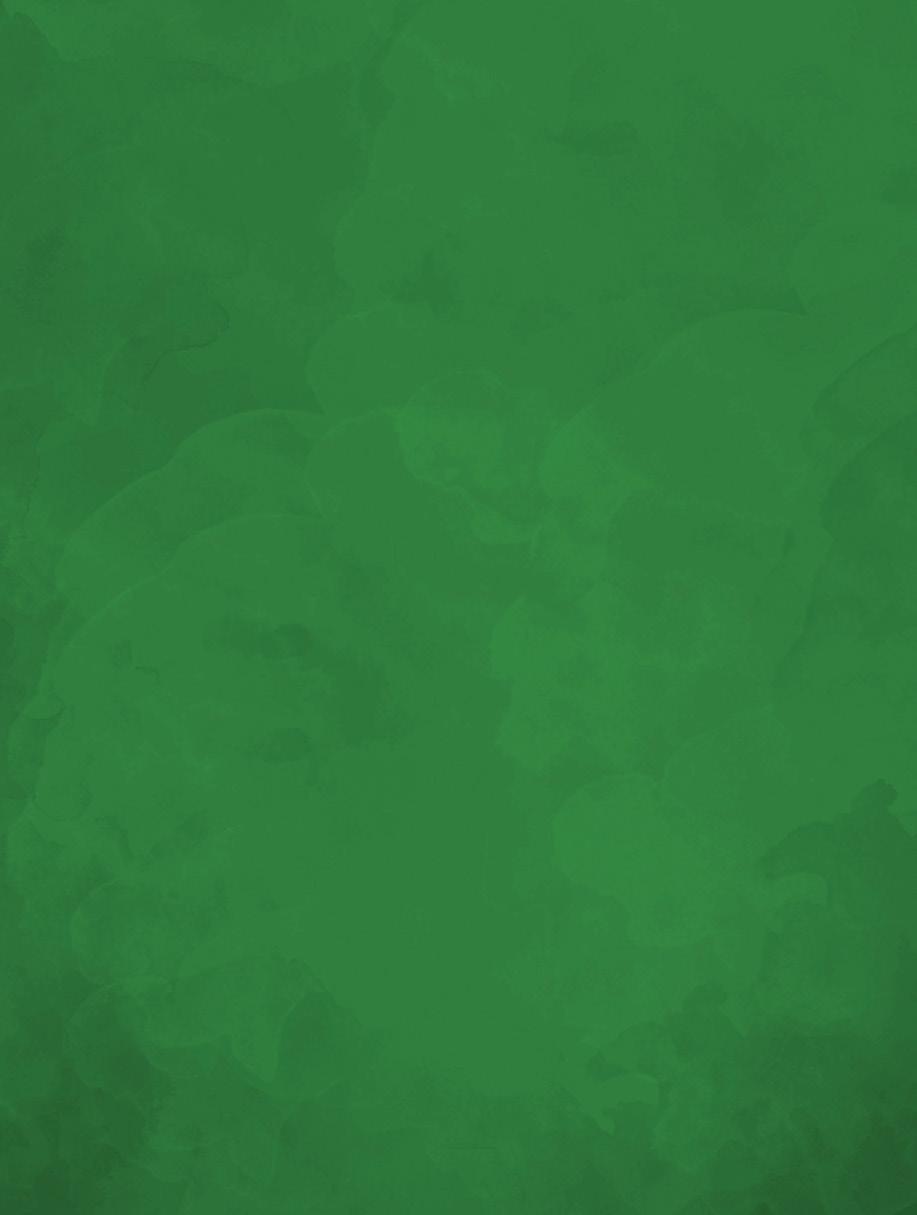


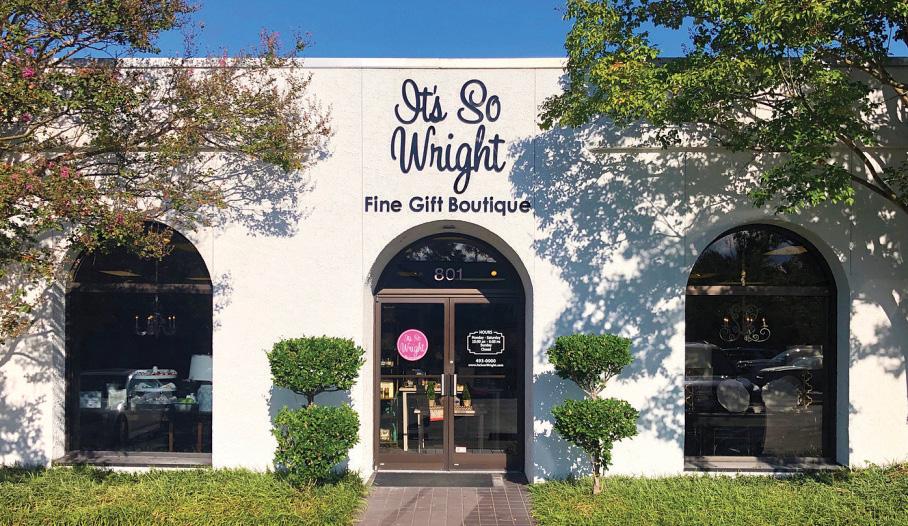

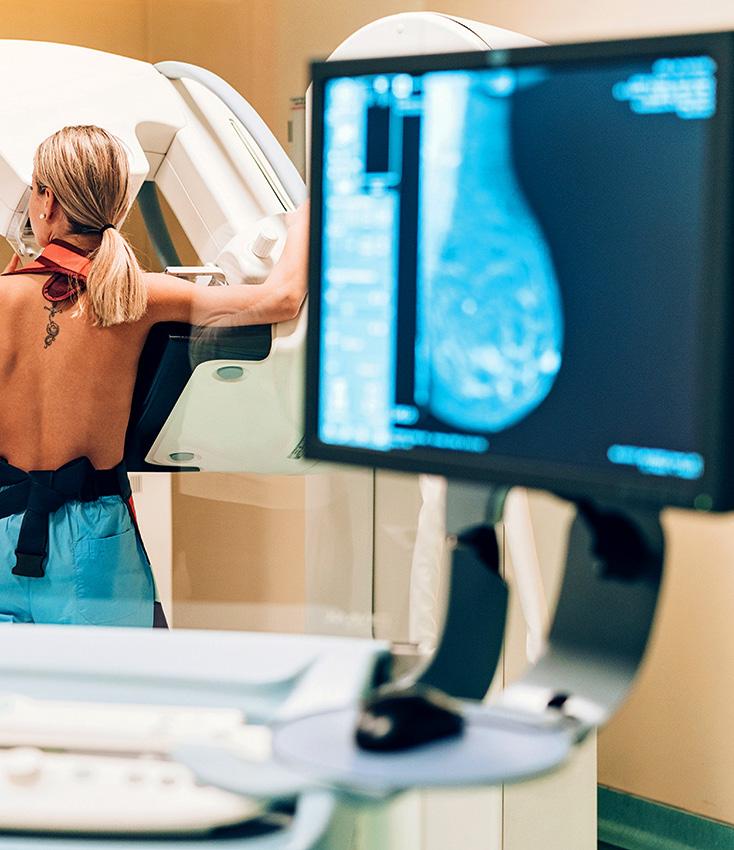
Lumps also may be the result of injury. Blood can collect under the skin and form a type of lump called a hematoma. Other lumps may be traced to lipomas, which is a collection of fatty tissue or breast abscesses, which typically occur if a person is breastfeeding or has recently given birth. Additional causes of lumps can be discussed with a doctor. Though the majority of lumps are not a cause for concern, it is important for people to regularly feel their breasts to check for abnormalities. Doctors may recommend annual mammograms to women age 40 and older. In its earliest stages, breast cancer may produce little to no visible symptoms, but a mammogram may be able to catch something early on.



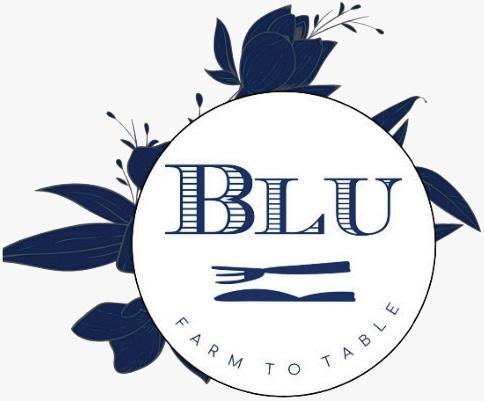












































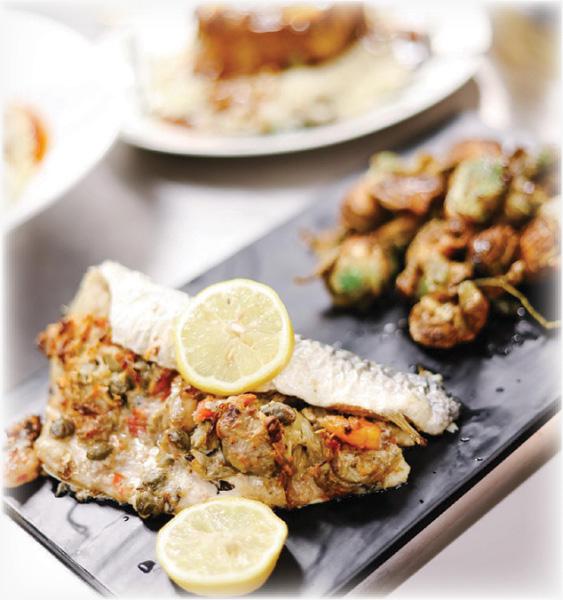






















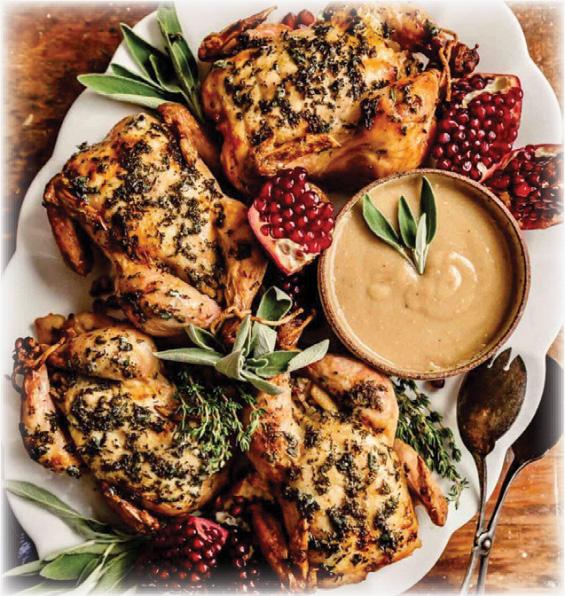
































































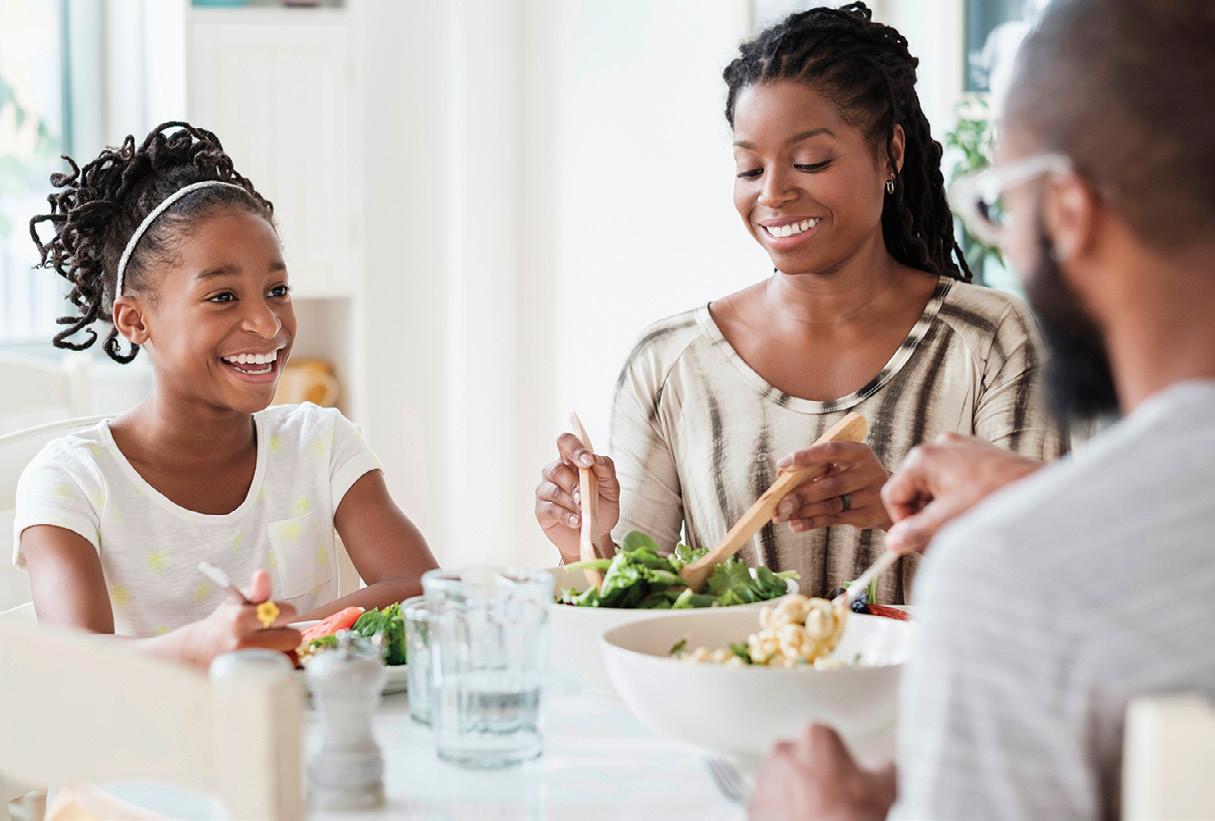 BY BONNIE LESKO-ROBERTS
BY BONNIE LESKO-ROBERTS
Chronic diseases such as high blood pressure, diabetes and heart disease, can make everything ‘out of control.’ There may be something you CAN control. What is that you might say? It’s your eating habits.
Healthy foods play a large role in disease prevention. Making healthy choices more often can help a person feel better, as well as help prevent chronic conditions such as cancer, diabetes, obesity and many others. Include some of these familiar foods daily, but work with your doctor or Registered Dietitian if you have a specifc condition that may need a more specialized food plan.
Vegetables and Whole Fruits: These foods pack a punch and are flled with antioxidants, fber, vitamins and minerals.
Lean Protein: Beans, lean meats in moderation, quinoa (a high protein whole grain), tofu and tempeh are good sources of protein that help make up a balanced diet.
Whole Grains: Fiber helps ‘sweep out’ the intestines and keeps the digestive system running smoothly. Fiber also helps maintain healthy blood sugar levels.
Low-fat Dairy: Calcium and Vitamin D help keep bones strong.
Polyunsaturated and Monounsaturated Fats: Using these in limited amounts may aid in heart health. These foods include nuts, olive oil, and nut butters.
Fermented Foods: Foods such as sauerkraut, kimchi, and yogurt help provide ‘good bacteria’ to keep the gut healthy.
Water: Make water the beverage of choice to stay hydrated and remove toxins. Add a squeeze of lemon for taste.
By including healthier foods like this featured recipe, you will be on your way to taking control of your health, feeling your best and preventing chronic diseases!

3 apples
1 cup grapes
2 kiwis
¹/³ cup pecans
1 cup blackberries
¼ cup orange juice
½ cup orange segments
½ cup pomegranate seeds
1 tablespoon maple syrup
1 teaspoon cinnamon
Wash and slice fruit, then add to a bowl. Pour maple syrup and orange juice as a salad dressing over the fruit. Sprinkle the cinnamon on top, and add whole or roughly chopped pecans. Toss gently to combine the ingredients evenly, and either serve the salad immediately or refrigerate it for a few hours until ready to serve.
You can easily adjust the recipe based on which ingredients you have available or personal preferences. This recipe can be layered with yogurt and whole grain granola for a breakfast parfait or dessert.
NUTRITION INFORMATION: Calories: 240 kcal, Carbohydrates: 48g, Protein: 3g, Fat: 6g, Saturated Fat: 1g, Polyunsaturated Fat: 2g, Monounsaturated Fat: 3g, Sodium: 6mg, Potassium: 531mg, Fiber: 9g, Sugar: 35g, Vitamin A: 303IU. Vitamin C: 71mg, Calcium: 67mg, Iron: 1mg
Bonnie Lesko-Roberts is a registered dietitian with the Pitt County Health Department WIC Program. For more information about WIC or other nutrition programs, call (252) 902-2300.
www.hintofhealthy.com/ fall-fruit-salad
 (makes 4 servings, approximately 1 cup each)
Photo and Adapted Recipe from:
(makes 4 servings, approximately 1 cup each)
Photo and Adapted Recipe from:
The number of women diagnosed with breast cancer in 2020 exceeded two million. That fgure, courtesy of the World Health Organization, underscores the signifcance of the threat posed by the disease. Though no one is immune to breast cancer, researchers have concluded that certain groups have a higher risk of developing the disease than others. Women who recognize their personal risk for breast cancer may not be able to change certain factors that increase their chances of developing the disease. However, recognition of their personal risk could put women in position to lower that risk in other ways. According to the WHO, the following are some groups who are at elevated risk of developing breast cancer.
• WOMEN: Johns Hopkins Medicine reports that less than 1 percent of all breast cancer cases occur in men. Though it’s still important for men to recognize they’re not immune to the disease, women must also recognize that nearly all of the more than two million annual breast cancer diagnoses across the globe are found in women.
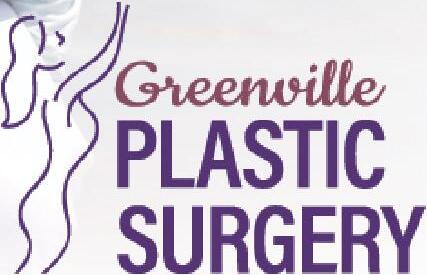

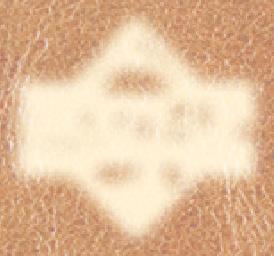
• WOMEN 50 AND OLDER: The Centers for Disease Control and Prevention reports that most breast cancers are found in women who are 50 years old or older. A report from the National Cancer Institute indicates that a 30-year-old woman has a 1 in 204 chance (0.49 percent) of being diagnosed with breast cancer, while a 40-year-old has a 1 in 65 chance (1.55 percent) of being diagnosed. By the time women reach age 60, their risk is 1 in 28 (3.54 percent), while a 70-year-old has a 1 in 24 chance (4.09 percent) of being diagnosed. Though women of any age can get the disease, the risk clearly increases as women get older.
• WOMEN WHO MEET THE CRITERIA FOR BEING OVERWEIGHT OR OBESE: The nonproft organization Susan G. Komen®, which helps to raise funds for the fght against breast cancer, notes that women who are overweight or obese after menopause have a 20 to 60 percent higher risk of developing breast cancer than women who are not overweight or obese. The American Cancer Society reports that having more fat tissue increases breast cancer risk because it raises estrogen levels. However, the ACS notes the link between weight and breast cancer risk is complicated, so it’s worth it for women concerned about their cancer risk to open a dialogue with their physicians.
• WOMEN WHO CONSUME ALCOHOL: The MD Anderson Cancer Center reports that alcohol consumption and breast cancer risk are linked. Though the precise cause of the link is unknown, one theory suggests that consuming alcohol can increase estrogen levels as well as the levels of other hormones associated with breast cancer. However, the MDACC warns that the risk is very low, particularly for women who limit their consumption to one drink or less per day. Routinely consuming more than one alcoholic drink per day is a cause for concern.
It’s vital that women recognize their risk for breast cancer. Though any woman can be diagnosed with breast cancer, certain factors, including some that can be avoided, can increase a woman’s risk for the disease.
News

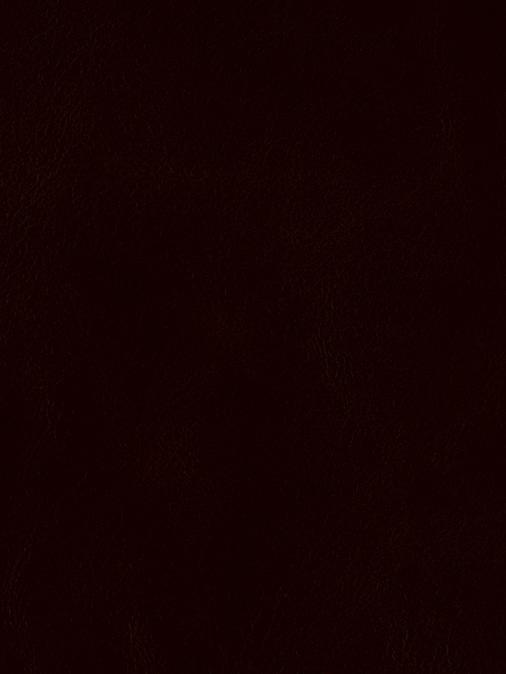


Giddy-Up Cofee House was founded in 2017 and has locations in both Washington, NC at 1101 Highland Drive and Greenville, NC at 1872 W. Arlington Blvd., right in front of Physician’s East.

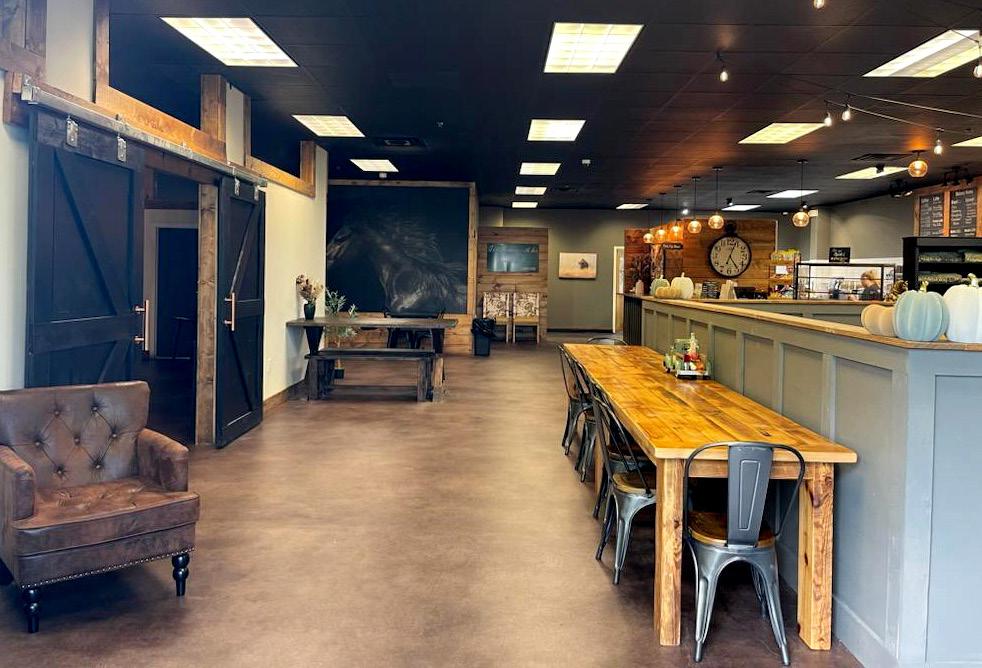

Owners, Loralyn and Trey Moore, are excited their cofee shop is now open in Greenville. Back in late 2022, the old Medical Park Pharmacy location became available and they knew that was the perfect spot to open up their second Giddy-Up Cofee House location. “When this location became available, we felt it was an opportunity that was meant to be. We are so grateful and have enjoyed the love and support the community has given to us in the few short months that we’ve been open,” Moore says.

Giddy-up was named after their hobbies, which include horses and roping. Trey is a bull-rider turned team roper. They live on a farm near Washington with several horses, roping steers, and plenty of dogs. When you walk into the modern western themed 2,000 square foot cofee shop, there are plenty of seating options, nooks and comfy areas to choose from, with plenty of outlets for those seeking a serene place to get some work done while sipping their cofee. For those needing a quick pick-up, you can access their easy drive-up window.
Custom roasted Giddy-Up cofee blends include an organic medium roast house blend, a Sumatran dark roast and a favor of the month that changes with the seasons. All of their cofee favor combinations can be ordered hot, iced or blended with various milk options. Over 20 sugarfree favors are available and their trained baristas are ready to help you custom create a drink based on your specifc needs or allergies. Some favorites include the Mona, with notes of toasted marshmallow, white chocolate and hazelnut, or the tofee nut crunch. The favor of the month for October is the frosted pumpkin roll, which tastes like white chocolate pumpkin pie.
They also have an on-site separate conference room
that can accommodate 30 people with its own entrance. You can also secure the entire facility for larger events and gatherings up to 50 people anytime after 5p.m. In the coming months, they will open up their pet-friendly outdoor seating area. They will soon be unveiling an exciting cofee subscription with multiple options, including nationwide shipping of their NC roasted and packaged cofee blends. Once the new project is up and running, they plan to donate a portion of funds from subscriptions to fund North Carolina Equine charities and rehabilitation services with veterans and other organizations.
Giddy-Up Cofee House’s Fall hours are Monday-Friday 7a.m.-5p.m. and Saturday from 8a.m.-3p.m. They are closed on Sunday. For more information on their menu and favor of the month, visit their Facebook page or Instagram Page @giddyupcofeehouse.
Sponsored Content



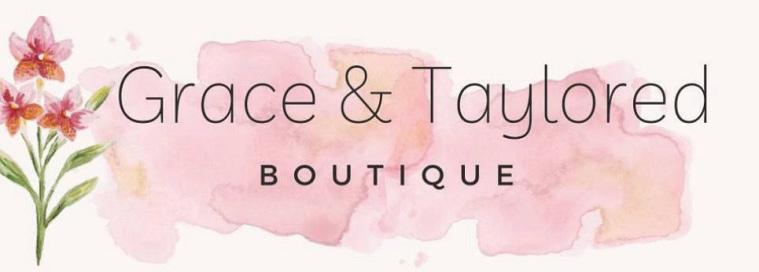

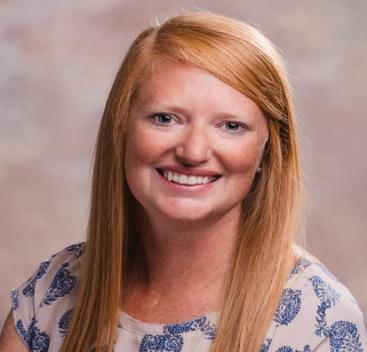

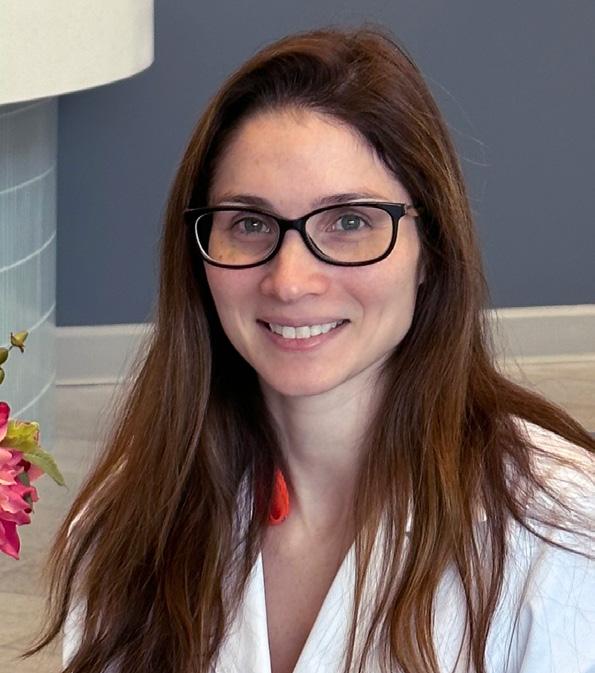
Dr. Matheus began her medical education at Baylor College of Medicine, where she cultivated her passion for radiology. Her dedication to the feld led her to complete her diagnostic radiology residency at the University of Texas Southwestern Medical Center, where she earned the prestigious title of Chief Resident. Her commitment to patient care and pursuit of excellence led her to a breast imaging fellowship at the same esteemed institution.

Eastern Radiologists has been serving the greater Greenville area and eastern North Carolina for more than 65 years. Their 60+ physicians are board-certifed and sub-specialized, ofering unparalleled experience and expertise. They partner with your doctors and specialists in both diagnostics and treatment, playing a critical role in your healthcare. And their state-of-theart technology is second to none. In fact, ECU Health has been trusting them for decades to provide imaging services and interpret their patients’ scans in all areas of radiology. Today they serve a total of 13 hospitals, six outpatient centers and 86 points of care in eastern North Carolina. So next time your doctor recommends an imaging scan or minimally invasive procedure, ask for a referral to Eastern Radiologists.

2101 W. Arlington Blvd., Ste 100, Greenville, NC 252-752-5000 • www.easternrad.com

Hours: Monday – Friday 7am – 9pm, Saturday and Sunday 8am – 8pm



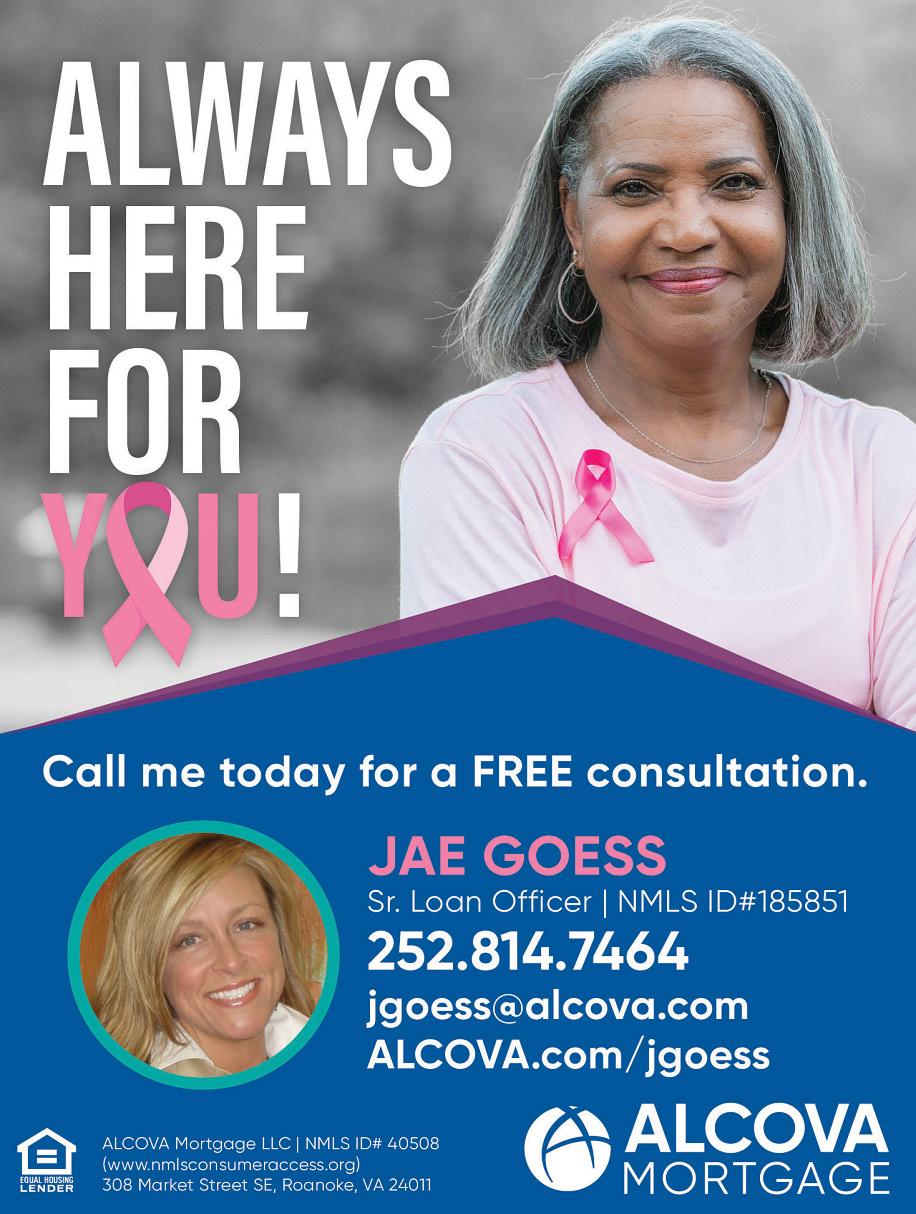
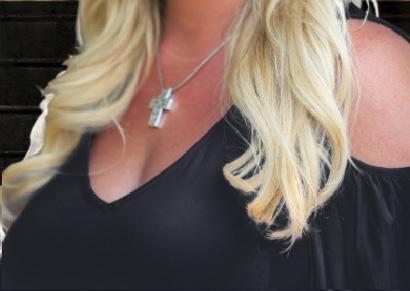
 Branch Partner
Branch Partner
As we know, October is set aside for Breast Cancer Awareness month. There are several women in my family and friend circle that I know personally who have been diagnosed with breast cancer. There are some who have passed away and others who have survived it. Today, I want to dedicate this article to one of my best friends in the whole world (she really is my twin sister) who survived breast cancer: Shonicia “Niecy” Jones. As I began to refect upon how she walked through her battle with breast cancer, I learned so much from her life—and I want to sum those lessons up as a source of encouragement through this acronym. When you are going through a serious battle (even if it is not breast cancer), you need to know how to F.I.G.H.T. I noticed that Niecy pursued the following strategies as she walked through her challenge and if you fnd yourself going through a tough time, I want to encourage you to take a lesson from her personal victory.
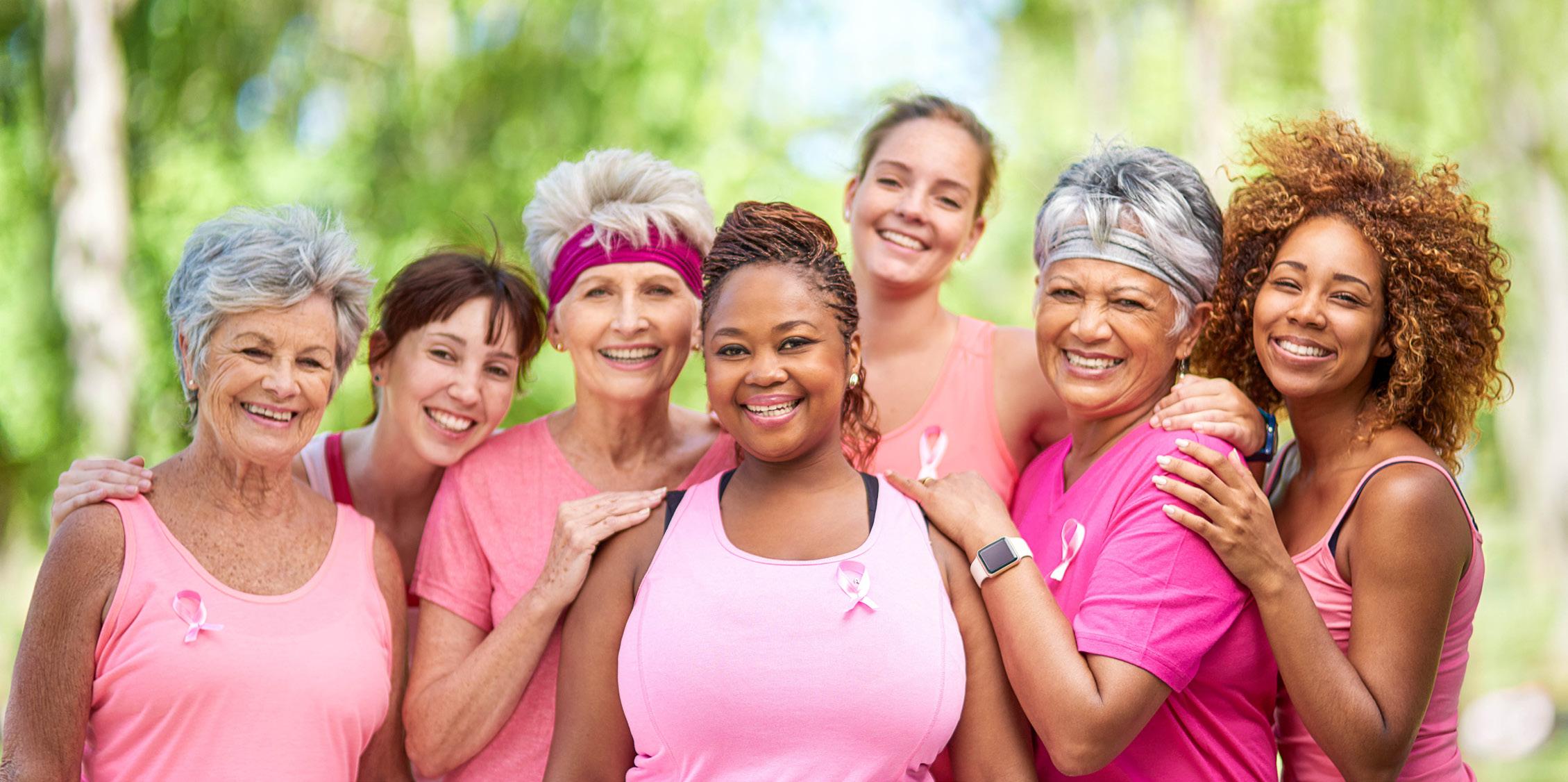
1. Focus: Niecy decided to focus on what really mattered and that was her faith, family, and future. I noticed that she made a declaration that she was going to put frst things frst and prioritize what really mattered to her each day. You see, when you are in a challenge or a battle, particularly related to health, you need to put your focus on what really matters so that you can anchor your strength. You must preserve your energy because during a battle, your energy is limited. You must decide to put your focus on what will yield the greatest fulfllment and sense of joy for you. This is critical. Niecy would go to chemotherapy and take that time to learn a new skill by maximizing that time that she
was sitting there receiving treatment. She would dream of where she wanted to travel, think of new business ideas, write in her journal, as well as pray for others that may have been going through a hard challenge at the time. She prioritized her focus.
LESSON #2: INVENTORY
2. Inventory: she took inventory regularly. What do I mean by that? In other words, she looked around to see what she had instead of focusing on what she did not have. Niecy said that daily she would stop to think about all the goodness that she had surrounding her, particularly on days when she did not feel as strong in her physical body. Doing this helped her to keep her emotional tank flled so that when she had to go into the ofce to receive her chemotherapy, she would have the strength to keep pushing. Consequently, Niecy wrote a book that chronicled her journey entitled “Victorious Secrets for the Breast Cancer Survivor” (It’s truly a great resource: on Amazon or her website, www.niecyjones.com.)
LESSON #3: GRATITUDE
3. Gratitude: another lesson that stood out to me from Niecy’s journey was keeping a posture of gratitude while walking through her battle. I understand that the more you think about the things that you are thankful for, the less time you have time to think about what you do not have or what is going wrong, or how bad you may be feeling. Complaining is draining! I will say that again: complaining is draining! You will never gain strength if you constantly focus on weakness. Each day, Niecy would start her day with a list
of gratitude and that gave her the strength to stand on tougher days.


4. Help somebody else: one of the greatest ways to overcome a challenge is to position yourself to encourage someone else who may be worse of than you. My brother, Pastor Trev Evans, has coined a phrase that is so profound: “We were NOT made to do life alone!” In other words, we need each other’s help. I noticed that Niecy did not just sit down and sulk in her health challenge. Instead, she decided to be an instrument of impact by sharing her story, and encouraging and pouring into people who were going through similar things. This is powerful because the principle is: you will reap what you sow... when you help someone else, you get stronger. That’s a fact!




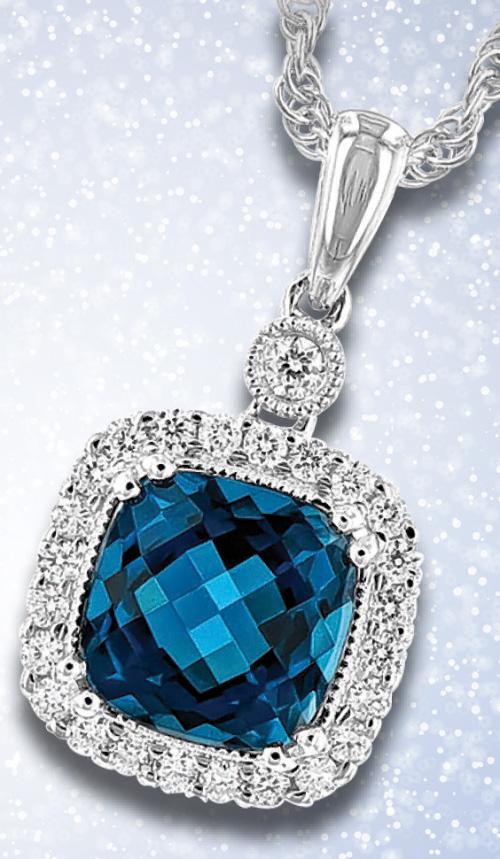
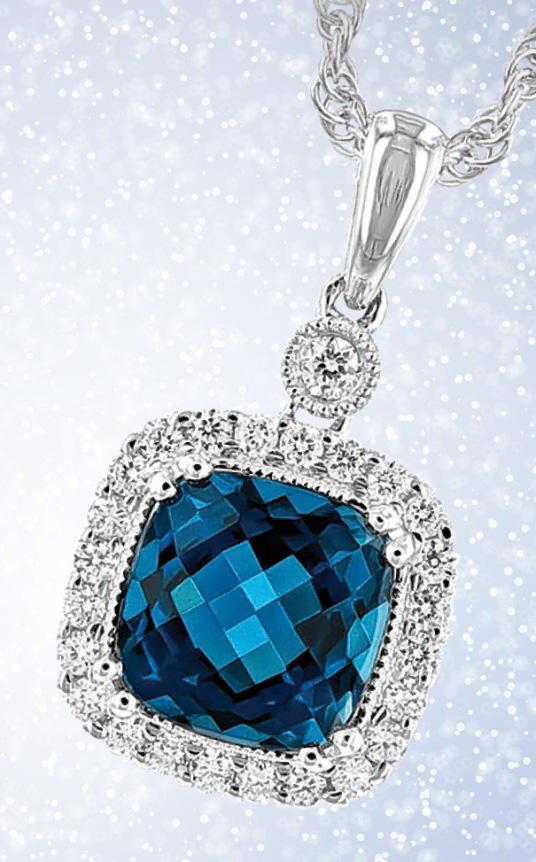













5. Track the small victories: I noticed that Niecy did not always have good days when walking through her battle. Some of those days, she felt horrible. However, I watched her track the small victories. If on Wednesday she was having to shave all the rest of her hair of because the treatment was taking it out, on Thursday, she celebrated when she woke up that morning because she was still able to breathe on her own without assistance. She was still able to get up and see the sunrise and feel the cool winds brush across her face. She still had food on her table and clothes on her back. She was still in the land of the living and able to spend time with her family and friends. I thought this was powerful because every day will not be sunny, there will be cloudy times, but if you can keep track of the victories—you will be able to weather all the storms and win the battle!
Listen, whether you are going through breast cancer or faced with some other kind of challenge, I want to encourage you to position yourself to F.I.G.H.T. You have so much more life to live and so much more love to give. You are not in this world alone and there is hope! My prayer is that this article will be a source of encouragement for you. Remember this: Life is not always smooth sailing and there are some battles built in that we can absolutely win if we learn how to F.I.G.H.T.! Until next time…. Have an amazing month.




Christy Jones, also know as Coach Chris is an improvement coach for leaders. She helps them break free from feeling overwhelmed and prepares them to take their teams to high levels of performance. Contact her at www.beginmonday.com.


Family history is considered a risk factor for various diseases, and breast cancer is no exception.




















According to Cancer Research UK, having a frst degree relative, which includes a mother, sister or daughter, diagnosed with breast cancer approximately doubles a woman’s risk for breast cancer. However, the American Cancer Society notes that only about 5 to 10 percent of breast cancer cases are thought to be hereditary . Hereditary cases of breast cancer are those that result directly from gene mutations passed on from a parent. The relatively small percentage of hereditary cases is important to note, as it means that the vast majority of women who are diagnosed with the disease have no family history of breast cancer.
- Metro News





We design, manufacture, marketand


























































of ever yday personal careproducts

Attindas is an equal oppor tunity employer. Quali ed applicants will be considered without regards to ag e, race,creed, color,national origin, ancestr y, marital status, sexual orientation, disability,nationality,sex,orveteran status.


























Are you feeling anxious or stressed? Do you feel rundown or of-balance? Do you feel overwhelmed or a have a general sense of uneasiness? No matter what age you are or medical conditions you sufer from, there are always alternative healing methods to consider to help heal your body and mind. Here are just a few methods that may ofer you whole-body wellness benefts.
Reiki is a gentle, holistic technique used to promote stress reduction and relaxation. It is helpful in restoring mind-body-spirit balance and harmony. Reiki is universal life force love energy. Everything is made of energy. Our bodies are made of energy and thrive when our energy is centered and balanced. In times of stress, you may feel imbalances in the form of anger, anxiety, exhaustion, sickness, or feel run down. Over time this stress/life leads to energetic blockages in your body. Receiving Reiki assists in removing these blockages, so your body can be in a natural state of balance.
Basic meditation includes laying down, noticing your body, focusing on your breath, and working to calm your mind. Mediation, however, is not just about quieting your thoughts, but taking power over them and not allowing them to be intrusive in your daily life. Sitting with yourself can sometimes be hard. Some days will be invigorating, flled with clarity and love. Other days will be uncomfortable and even torturous to be still. It’s in those moments where you can create discipline and trust in your practice. The benefts of your meditations rarely are instant. You discover them when you notice you pause before reacting when frustrated or when you use your breath as an anchor. In real life your practice will show you that your work was done. Meditation can also assist with understanding your pain levels, lowering stress, improving sleep and focus, and reducing brain chatter.
Yoga is an ancient practice that is used to help connect the mind, body, and spirit. Yoga essentially means to join, to unite. In practices, you work on linking breath with movement, creating unity of the mind and body. Yoga not only helps get into the parasympathetic nervous system, but also allows the body to build strength, increase range of motion, fexibility and mobility, tone muscles, and allows you to honor your body in a compassionate way. When working with a trained professional, you can create customized plans to help reach your health goals in mindful ways.
Most types of yoga are relatively mild and, therefore, a safe option for those seeking a calmer workout with a well-trained instructor.

All of the services above are ofered at Zen Sister Healing, located at 202 East Arlington Blvd, Suite A in Greenville, NC. Services ofered include private yoga, Reiki and meditation sessions. For more information, visit the website www.feelmorewhole.com or call (252) 8141985. Mention this article to receive 20% of any new service and a free consultation.
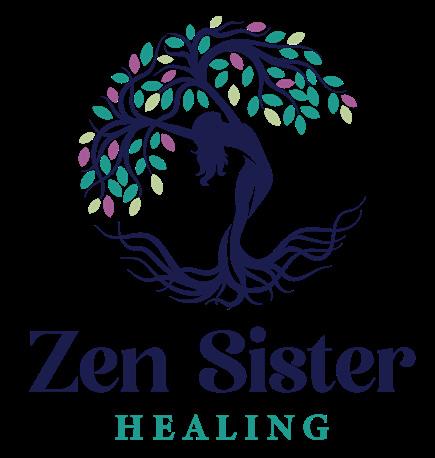
Frannie Ayers spent years feeling empty and searching for something to calm her anxiety. After learning how to turn her stressful, anxiety riddled life as a mom, friend and business owner using her body, mind, and energy to help promote mental and physical restoration, she now shares those techniques with clients through her business, Zen Sister Healing.






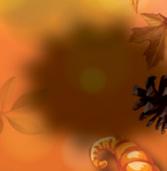
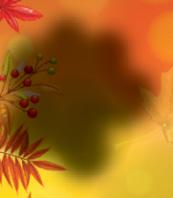









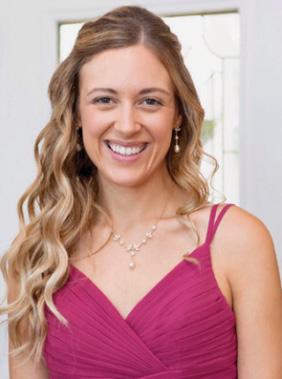




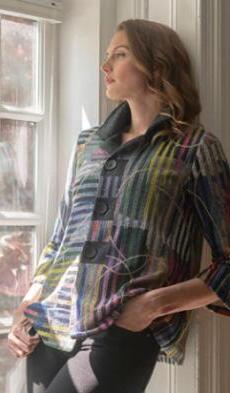






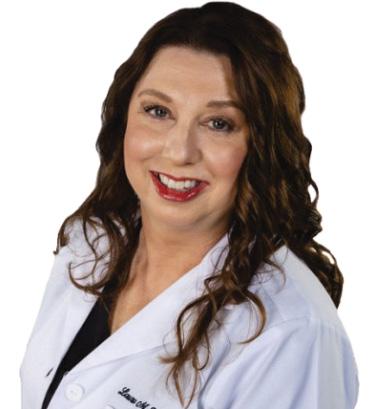




Ahost of variables afect a woman’s risk for breast cancer. Some variables are related to a woman’s lifestyle. For example, the American Cancer Society reports that a sedentary lifestyle can increase breast cancer risk. In addition, the ACS notes that women who consume unhealthy diets are at greater risk of becoming overweight or obese, which also increases breast cancer risk. A woman’s lifestyle is largely up to her, which means women can exert a measure of control over their risk for a disease that the World Cancer Research Fund International reports was the world’s most commonly diagnosed cancer in 2020. However, additional variables beyond a woman’s control, including breast density, can increase risk for breast cancer.
WHAT IS BREAST DENSITY? The Centers for Disease Control and Prevention notes that breast density refects the amount of fbrous and glandular tissue in a woman’s breasts compared to the amount of fatty tissue in the breasts.
HOW DO I KNOW IF I HAVE DENSE BREASTS? Women cannot self-diagnose dense breasts. The National Cancer Institute notes that only a radiologist can determine if a woman has dense breasts, and that’s only possible after a mammogram.

WHAT IS THE SIGNIFICANCE OF BREAST DENSITY? Breast density and breast cancer are linked, which underscores how important it can be for women to discuss breast density with their physicians. The National Cancer Institute notes that dense

breasts are not considered an abnormal breast condition or a disease, though they are a risk factor for breast cancer. Women determined to have dense breasts have a higher risk of breast cancer than women with fatty breasts.

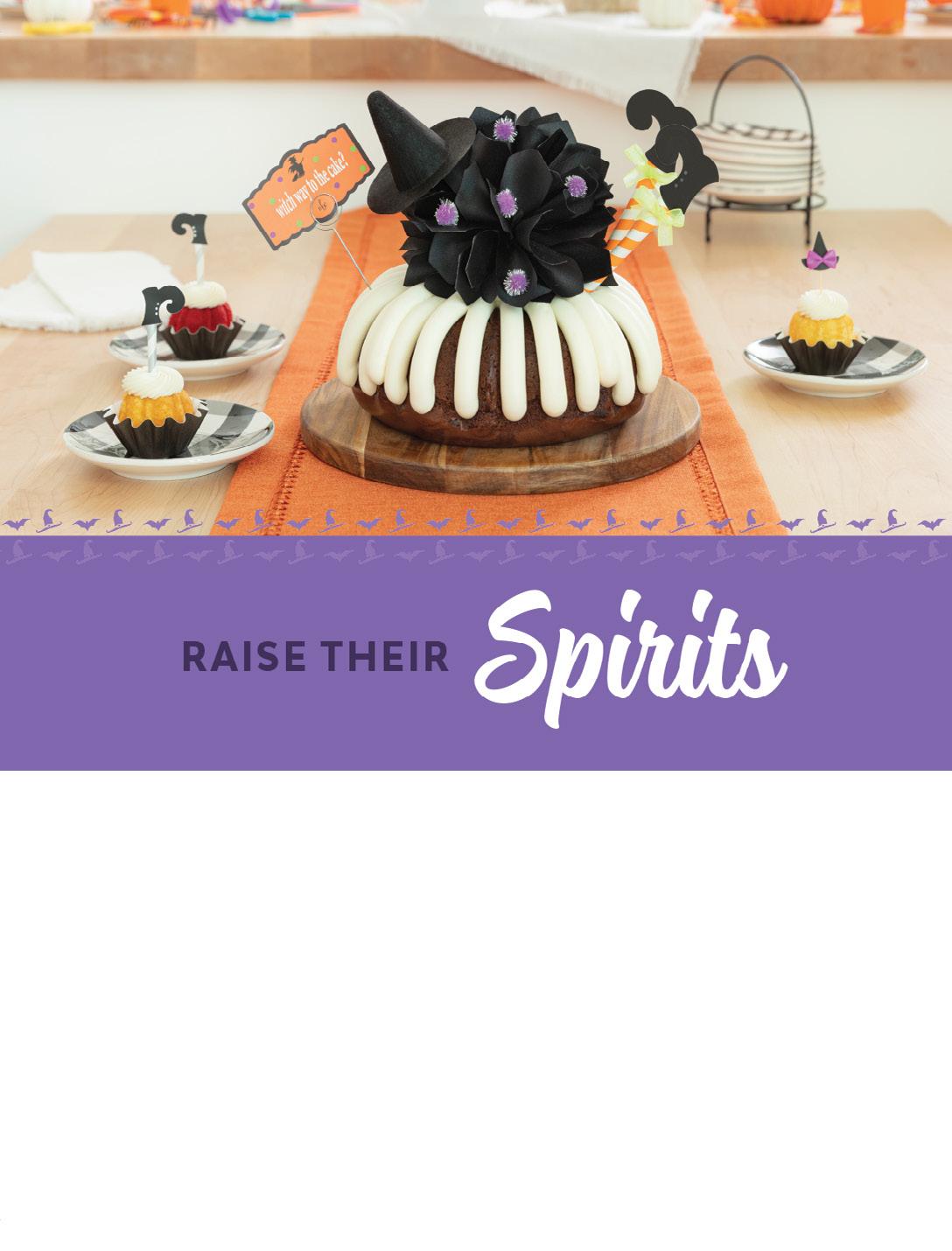
The CDC notes that dense tissue can hide cancers, as the fbrous and glandular tissue in breasts, which is more abundant in dense breasts than fatty breasts, looks white on a mammogram. That’s signifcant, as tumors also look white on mammograms, which means it’s easy to mistake a small tumor for fbrous and glandular tissue.
WHAT CAN I DO IF I HAVE DENSE BREASTS? It’s important that women with dense breasts open a dialogue with their physicians. This is especially important when switching physicians, as a new doctor can consider this when treating a patient for the frst time. Doctors may recommend certain tests to women with dense breasts, particularly after considering a woman’s age and family history of breast cancer. The CDC notes that additional testing can produce a false positive result, so women can discuss that likelihood as well. But in some cases, a breast ultrasound or a breast MRI may detect a tumor that a mammogram did not fnd, so additional testing should not be written of.
Breast density and breast cancer are linked, but the NCI notes that research has indicated that women with dense breasts are no more likely to die from breast cancer than women with fatty breasts. More information about breast density can be found at cancer.gov. - Metro News
Individuals can experience a whirlwind of emotion upon being diagnosed with cancer. No one ever expects to receive such a diagnosis, so the moment a physician delivers such news can be emotional and compromise a person’s ability to focus. Once those emotions settle down and individuals resolve to overcome the disease, they typically have a lot of questions. One of the questions doctors will attempt to answer is which subtype of cancer a person has. For example, when doctors initially deliver a breast cancer diagnosis, they may explain that further testing will be necessary to determine precisely which type of breast cancer an individual has. Identifying the subtype of breast cancer helps doctors choose the most efective course of treatment, but it’s understandable if patients and their families become confused during the process. The following rundown can help breast cancer patients understand this crucial next step after diagnosis.
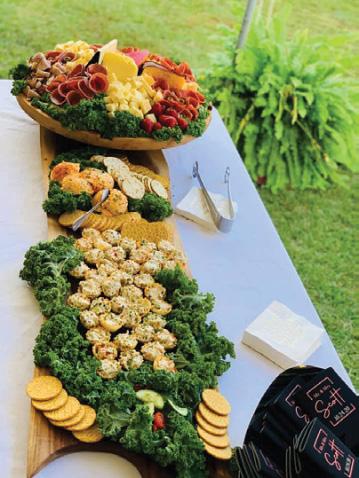
The American Cancer Society notes that breast cancer type is determined by the specifc cells in the breast that become cancer. The Mayo Clinic reports that a medical team will use a tissue sample from a patient’s breast biopsy or, for patients who have already undergone surgery, the tumor to identify the cancer type.
There are many types of breast cancer, but some are more common than others. Invasive and non-invasive (also referred to as “carcinoma in situ”) are the two main subtypes of breast cancer. According to the University of Pittsburgh Medical Center, the most common types of invasive breast cancer are invasive ductal carcinoma, which afects the inner lining of the milk ducts, and invasive lobular carcinoma, which originates from the glands that produce milk.
The UPMC reports that the most common in situ types are ductal carcinoma in situ, which is cancer that remains within the milk ducts, and lobular carcinoma in situ, which does not often develop into breast cancer though it is considered a risk factor for an invasive form of the disease.

The ACS notes that triple-negative breast cancer is an aggressive form of breast cancer that accounts for roughly 15 percent of all breast cancers. Triple-negative breast cancer can be difcult to treat. Less common types of breast cancer, each of which account for between 1 and 3 percent of diagnoses in a given year, include Paget disease of the breast, angiosarcoma and phyllodes tumor. More information about the various types of breast cancer can be found at cancer.org.
- Metro News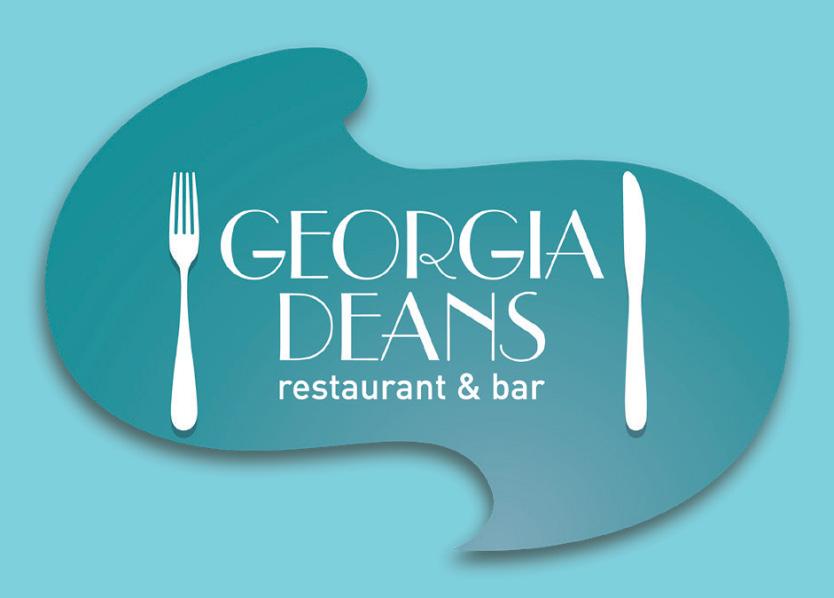

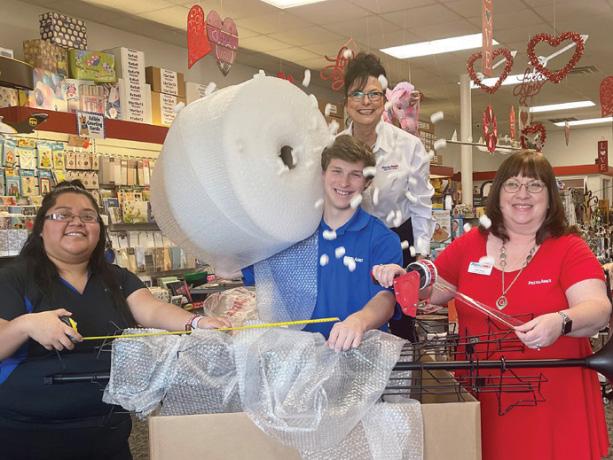
Once a person is diagnosed with cancer, his or her physician will try to determine how far the illness has progressed, including whether or not it has spread to other areas of the body. This efort is known as “staging.” The stage of the cancer ultimately refers to how much cancer is present in the body, indicates the American Cancer Society. Doctors treating breast cancer adhere to the TNM staging system, which is overseen by the American Joint Committee on Cancer. This staging uses both clinical and pathological (surgical) systems for breast cancer staging.
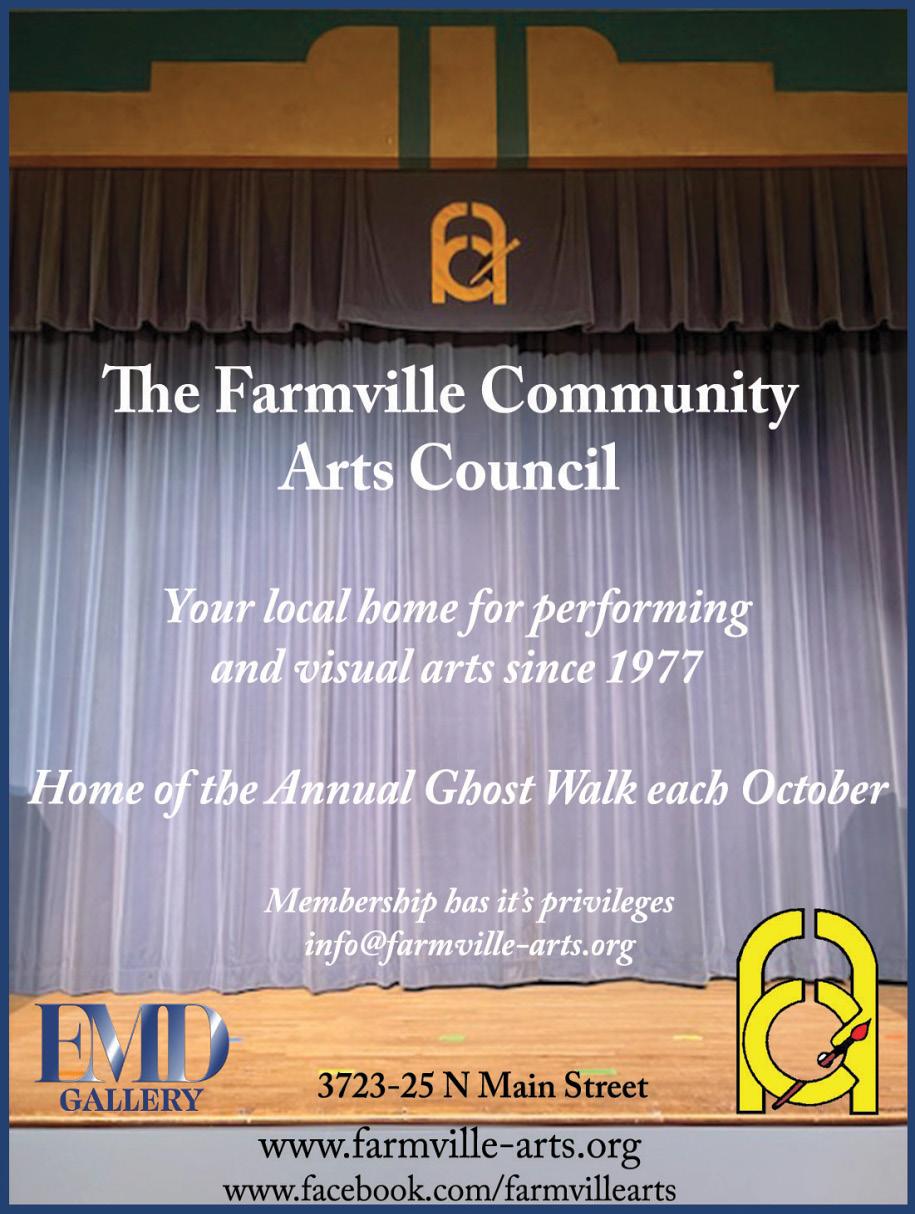
T CATEGORIES - T in the staging system refers to the tumor’s size and whether it has spread to the skin or chest wall under the breast. Higher numbers refer to larger tumors and greater spread.
TX: A primary tumor cannot be assessed.
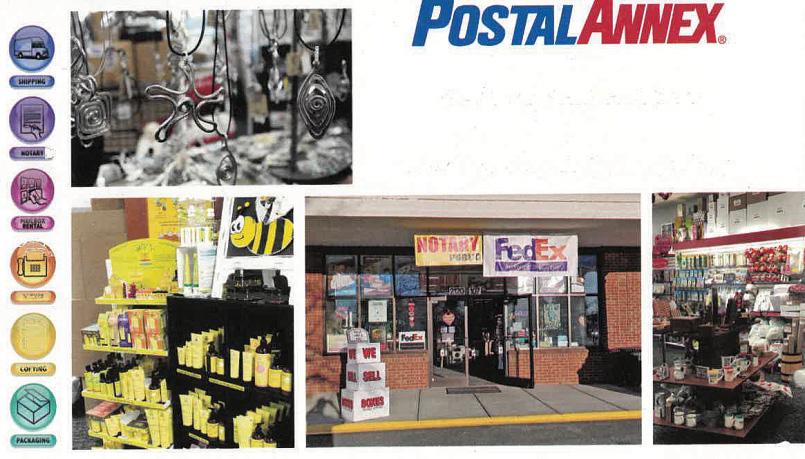

T0: No evidence of primary tumor.
T1: Tumor is 2 centimeters (cm) or less across.
T2: Tumor is more than 2 cm but not more than 5 cm across.
T3: Tumor is more than 5 cm across.
T4: Tumor is of any size growing into the chest wall or skin.
N CATEGORIES - N in the staging system identifes if the cancer has spread to the lymph nodes near the breast, and if so, how many.
NX: Nearby lymph nodes cannot be assessed, which can happen if they were previously removed.
N0: Cancer has not spread to nearby lymph nodes.
N1: Cancer has spread to one to three axillary (underarm) lymph node(s), and/or cancer is found in internal mammary lymph nodes (those near the breast bone) on a sentinel lymph node biopsy.
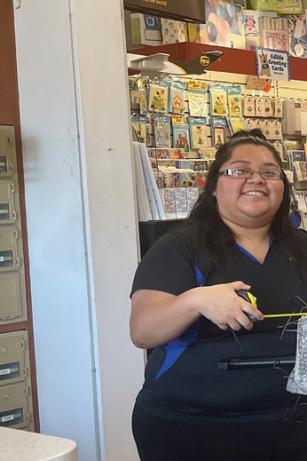
N2: Cancer has spread to four to nine lymph nodes under the arm. One or more area of cancer spread is larger than 2 millimeters (mm).
N3: Cancer has spread to any of the following: 10 or more axillary lymph nodes with area of cancer spread greater than 2 mm; to lymph nodes under the collarbone, with at least one area of cancer spread greater than 2 mm; cancer found in at least one axillary lymph node (with at least one area of cancer spread greater than 2 mm) and has enlarged the internal mammary lymph nodes; cancer in four or more axillary lymph nodes (with at least one area of cancer spread greater than 2 mm), and to the internal mammary lymph nodes on a sentinel lymph node biopsy; to the lymph nodes above the collarbone on the same side of the cancer with at least one area of cancer spread greater than 2 mm.
M CATEGORIES - M indicates if the cancer has spread to distant organs.
M0: No distant spread is present on X-rays or other imaging and physical tests.
M1: Cancer has spread to other organs, notably the brain, bones, liver or lungs as determined by a biopsy or testing.

Note that this staging system also uses sub-stages within each category, which further breaks down breast cancer staging into more characteristics and combinations. The ACS says there are so many possibilities that can go into staging that two women at the same breast cancer stage may have diferent experiences.

An article in the January/February 2023 edition of CA: A Cancer Journal for Clinicians noted that roughly 3.8 million cancer deaths have been averted since 1991. That fgure represents a 33 percent overall reduction in the cancer death rate over the last three-plus decades. A host of variables have combined to make that reduction possible, and advancements in cancer treatment are one such component. Despite improvements in cancer survival rates, the disease remains a formidable foe. Women know that all too well, as various forms of the disease, including breast cancer, continue to afect millions of women each year. The World Cancer Research Fund International reports that breast cancer was the most common cancer in the world in 2020, accounting for 12.5 percent of all new cases diagnosed in that year. When diagnosed with breast cancer, women will soon begin treatment, and the following are some of the options doctors may consider as they devise treatment plans.

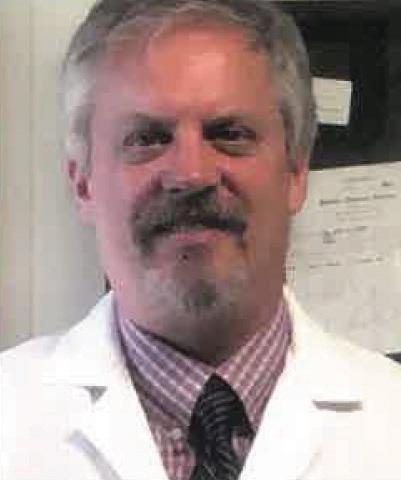
• CHEMOTHERAPY: The aim of chemotherapy is to destroy cancer cells or slow their growth. The National Breast Cancer Foundation® notes that chemotherapy employs a combination of drugs, which are usually administered orally or intravenously. Chemotherapy is a systemic therapy, which means the drugs will travel in the bloodstream throughout the entire body. That’s likely why, according to the organization Cancer Research UK, nearly everyone who receives chemotherapy experiences some


level of fatigue.
• RADIATION: The NBCF notes that radiation therapy utilizes high-energy rays to kill cancer cells. Radiation therapy afects only those parts of the body that are treated with radiation, so it might not lead to the same level of fatigue as chemotherapy. However, cancer care teams often utilize both radiation and chemotherapy to treat cancer. When treating breast cancer, radiation therapy is often utilized to destroy any remaining mutated cells in the breast or armpit area after surgery.
• HORMONE THERAPY: The American Cancer Society notes that some types of breast cancer are afected by hormones. In such cases, the receptors on breast cancer cells attach to hormones like estrogen and progesterone, which enables them to grow. Hormone therapy prevents such attachments. The ACS indicates that hormone therapy is often utilized after surgery to help reduce the risk of recurrence. Unlike chemotherapy and radiation therapy, which are generally administered over a relatively short period of time, hormone therapy is usually taken in pill form for fve years. When discussing a course of treatment with breast cancer patients, doctors may also recommend newer treatments like targeted therapies. The NBCF notes that these treatments, which utilize drugs designed to block the growth of breast cancer cells in specifc ways, are often administered in combination with chemotherapy.

China 10, located at 1904 East Fire Tower Road in Greenville, NC, has been open since 1996. Owners Lien and Phillip Hou, have enjoyed growing their business, expanding their menu and gaining a loyal base of new and repeat customers who have become family and friends. China 10 has been voted best Asian food in Greenville multiple years running. They specialize in fne Asian dining with hints of eastern culture dishes including many Thai options. The immersive menu features dishes that are hand-spun, ofering up refned favors, spices, and tastes. Customer favorites include the fortune combo, rosemary lamb, Singapore rice noodles, and other time-honored classic dishes that push the bounds of ordinary favor. Or you can choose from classic dishes from Sesame Chicken to Walnut Shrimp to Mandarin Orange Duck, or delight in more imaginative dishes from Gold Coins scallops with veggies, or Ghengis Khan Beef. Their artfully crafted entrees aford patrons a trip around the world in one dining experience the entire family will enjoy. Gluten free and dietary meals are also available.

Join them in their elegant dining room for dine-in, or take your meal to go with their carryout menu. They have a full bar with beer, wine, and liquor. Come celebrate birthdays, weddings, anniversaries or any other event with China 10. Their banquet room can accommodate up to 30 people or allow them to cater your of-site event including medical lunches, dinners and much more.
Lunch hours are Sunday-Friday from 11a.m.-3p.m. Join them for their early bird special Sunday-Fridays from 3p.m.-6p.m. Dinner hours are Sunday-Friday from 3p.m-9p.m. Sundays they close at 8:30p.m. and they are closed on Saturdays. For more information, call them at (252) 830-2238 or visit their website www.china10nc.com.
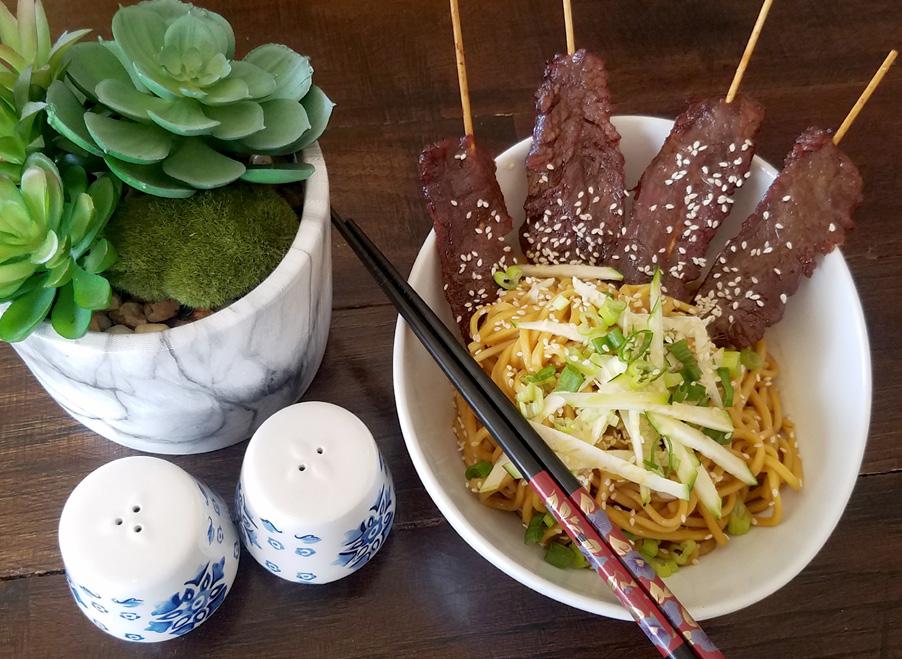
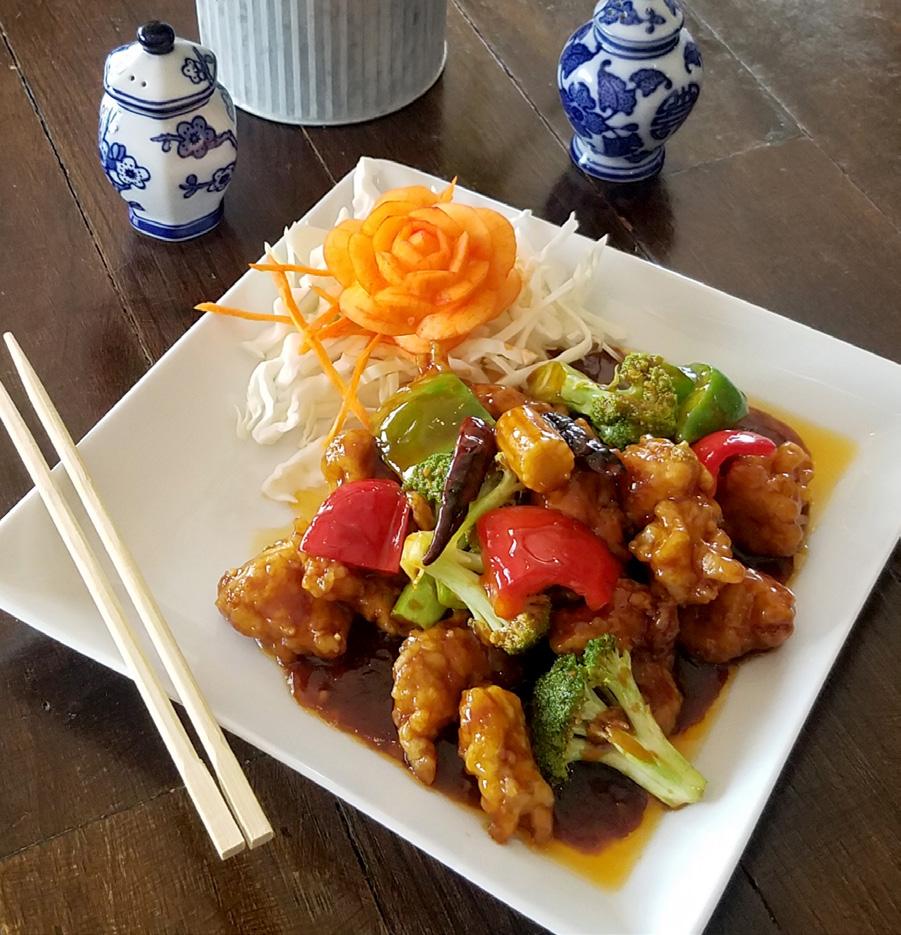

Cancer is a formidable disease that the World Health Organization reports is the leading cause of death worldwide. Figures vary, but organizations such as the WHO and the American Cancer Society estimate that around 9.5 million people die from cancer every year. No type of cancer causes more deaths in women across the globe than breast cancer. Though the fve-year survival rate for breast cancer patients has increased by a signifcant margin in recent decades, a 2019 study published in The Asian Pacifc Journal of Cancer Prevention reported a signifcant increase in breast cancer mortality rate in the 25-year period preceding the study. The researchers behind the study theorized that the spike in mortality rate could be due to an increase in incidence and prevalence of breast cancer. Like all cancers, breast cancer cannot be prevented. However, various healthy habits could help women reduce their risk for the disease.
• Avoid alcohol. The ACS reports that alcohol consumption is a clear risk factor for breast cancer. Risk increases with the amount of alcohol a woman consumes. For example, a woman who consumes one alcoholic drink per day has a 7 to 10 percent higher risk of getting breast cancer than a woman who abstains from alcohol. Drinking two to three drinks per day could increase risk by around 20 percent.



• Establish and maintain a healthy weight. Being overweight or obese increases breast cancer risk, particularly among postmenopausal women. According to the ACS, after menopause women get most of their estrogen from fat tissue. Fat tissue increases estrogen levels in the body, which in turn increases a woman’s risk for breast cancer. Elevated levels of insulin in the body, which is common among individuals who are overweight, also has been linked to higher breast cancer risk. Establishing and maintaining a healthy weight cannot prevent breast cancer, but it can help women reduce their risk for the disease.



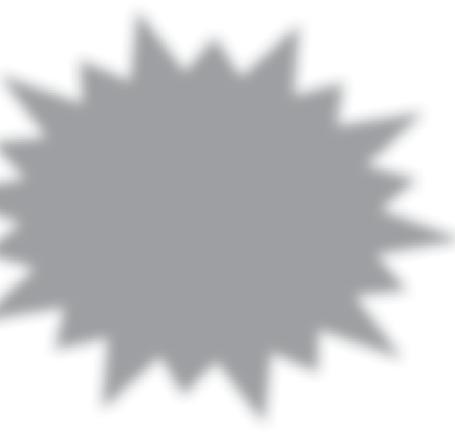

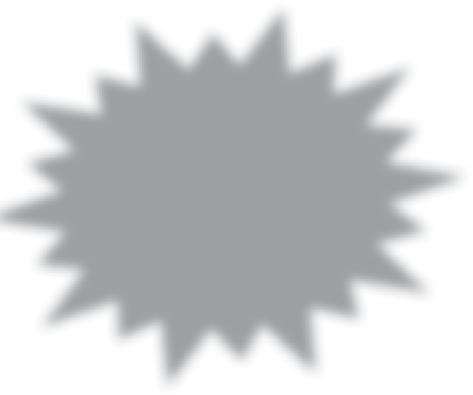

























• Maintain a physically active lifestyle. A sedentary lifestyle increases a person’s risk for various conditions and diseases. Women who live such a lifestyle are at elevated risk for breast cancer. The ACS notes that sedentary behavior such as sitting, lying down, watching television, or engaging with screen-based forms of entertainment that do not require physical activity can increase breast cancer risk, especially for women who spend most of their work day sitting down. A more physically active lifestyle that includes routine exercise can help women reduce their breast cancer risk.
• Adopt a nutritious diet. Eating right is another way for women to reduce their breast cancer risk. Vegetables, fberrich legumes such as beans and peas, fruits across the color spectrum, and whole grains are some components of a healthy, nutrient-rich diet that can help lower breast cancer risk. Women also can avoid certain foods, such as red and processed meats and refned grains, to lower their breast cancer risk.

































































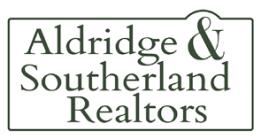
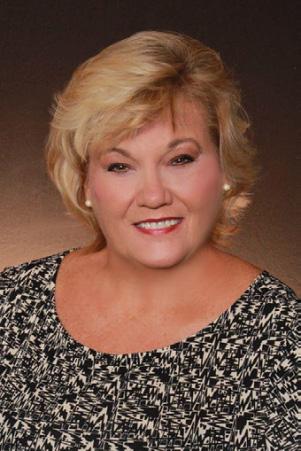




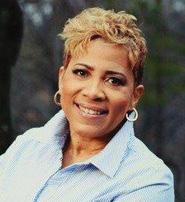



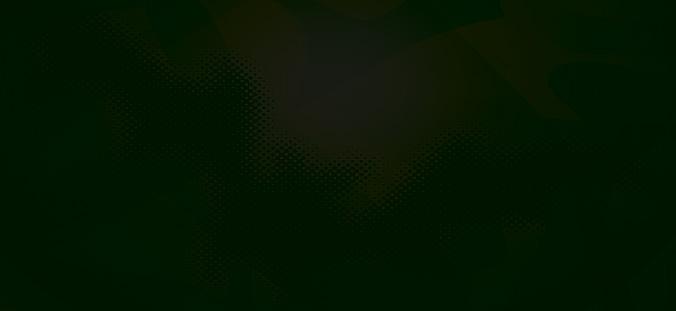
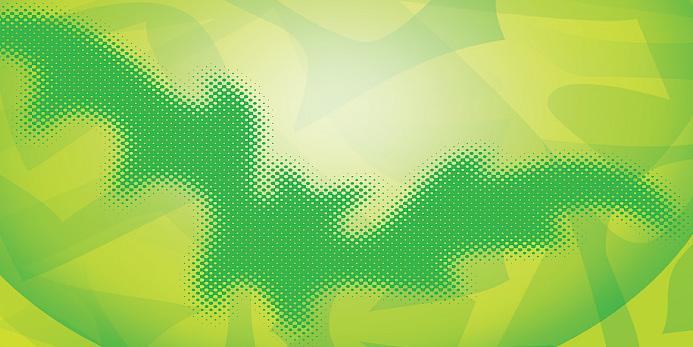

Hosted by Carolina

Breast Imaging Specialists, PLLC and Cancer Services of Eastern North Carolina

Sunday, October 8, 2023 - Registration starts at 1p.m. and the run begins at 2p.m. Run location: Landmark Street behind the Hilton Greenville.

Online registration is required. Please visit the website: www.cancerservicesofeasternnc.com.
For more information, please call (252) 561-5351.

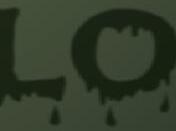

Hosted by River Park North, 1000 Mumford Road, Greenville, NC 27834
Thursday, October 26, 2023 from 10-11:30p.m.

Fee is $7 per child (Discounted Greenville resident fee is $5 per person)
Dress in your favorite costume, enjoy roasting marshmallows, bring a carved pumpkin to display, trick or treat with staf, meet and greet a snake and much more!


For more information, call (252) 329-4560.
Hosted by The American Heart Association

Saturday, October 28, 2023
(Events opens at 9a.m. Walk starts at 10a.m.) Walk location: East Carolina University Student Center, 501 E. 10th Street, Greenville, NC For more information, call (919) 463-8300 or email EasternNC@heart.org.
Hosted by Pitt Community College
Thursday, November 2, 2023 through Sunday, November 5, 2023
Location: Greenville Convention Center, Greenville, NC
This shopping event features over 175 small businesses selling everything from holiday decorations to handcrafted gift items to mouth-watering foods.
For more information, visit the website DownEastHolidayShow.com

Hosted by Beau’s Buddies Cancer Fund and Fleet Feet Shoes of Greenville, NC
Money raised stays in eastern North Carolina to assist families that are battling cancer.

Thursday, November 23, 2023 from 8a.m.12p.m. (5K or Family Walk)

Run location: Fleet Feet Shoes, 207 E. Arlington, Blvd., Greenville, NC
Registration starts at 6:30a.m. For more information, email bdsmythe78@yahoo. com or sign up by visiting runsignup.com.
Hosted by the Ayden Chamber of Commerce and the Town of Ayden
Location: Ayden Police Department, 4144 West Avenue, Ayden, NC
Thursday, November 30, 2023 (Christmas Town opens at 4p.m./ Parade of Lights starts at 6:30p.m.)
Enjoy a magical evening of games, lights, Christmas shopping, a parade, Santa and more!
For more information, www.aydenchamber.com/ Christmas-Town-in-Ayden-2023

DEC. 2-3
5TH ANNUAL HARBOR DISTRICT CHRISTMAS MARKET


Hosted by The Washington Harbor District Market
Location:
140 W. Main Street, Washington, NC from 9a.m.-5p.m.
Enjoy visiting local artists, local craftsman and vendors ofering a variety of holiday themed gifts.
For more information, visit the website, www.harbordistrictmarket.org
DEC. 2
ROCK CREEK BAPTIST CHURCH’S ANNUAL CHRISTMAS BAZAAR
Saturday, December 2, 2023 from 9a.m.-2p.m. Location - 1238 Rock Creek Drive, Nashville, NC
Enjoy visiting with over 70 vendors with goods such as pottery, jewelry, clothing, arts & crafts and much more.
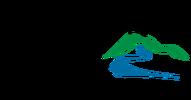
There is powerinthe expression of strength and dignity through abeautiful image. We at In Bloom Boudoir find fulfillment helping women discovertheir authentic selves during every stage of their personal journeys.

In Bloom Boudoir is Eastern North Carolina’spremier boudoir photographystudio created forwomen, by women.


Visit www.rockcreekbaptist.net for more info. 2404G South Charles Blvd, Greenville •(252) 714-4569 @in_bloom_boudoir •www.inbloomboudoir.com

**Please note that events are subject to change at any time, so please make sure to visit the websites to obtain up-to-date information**
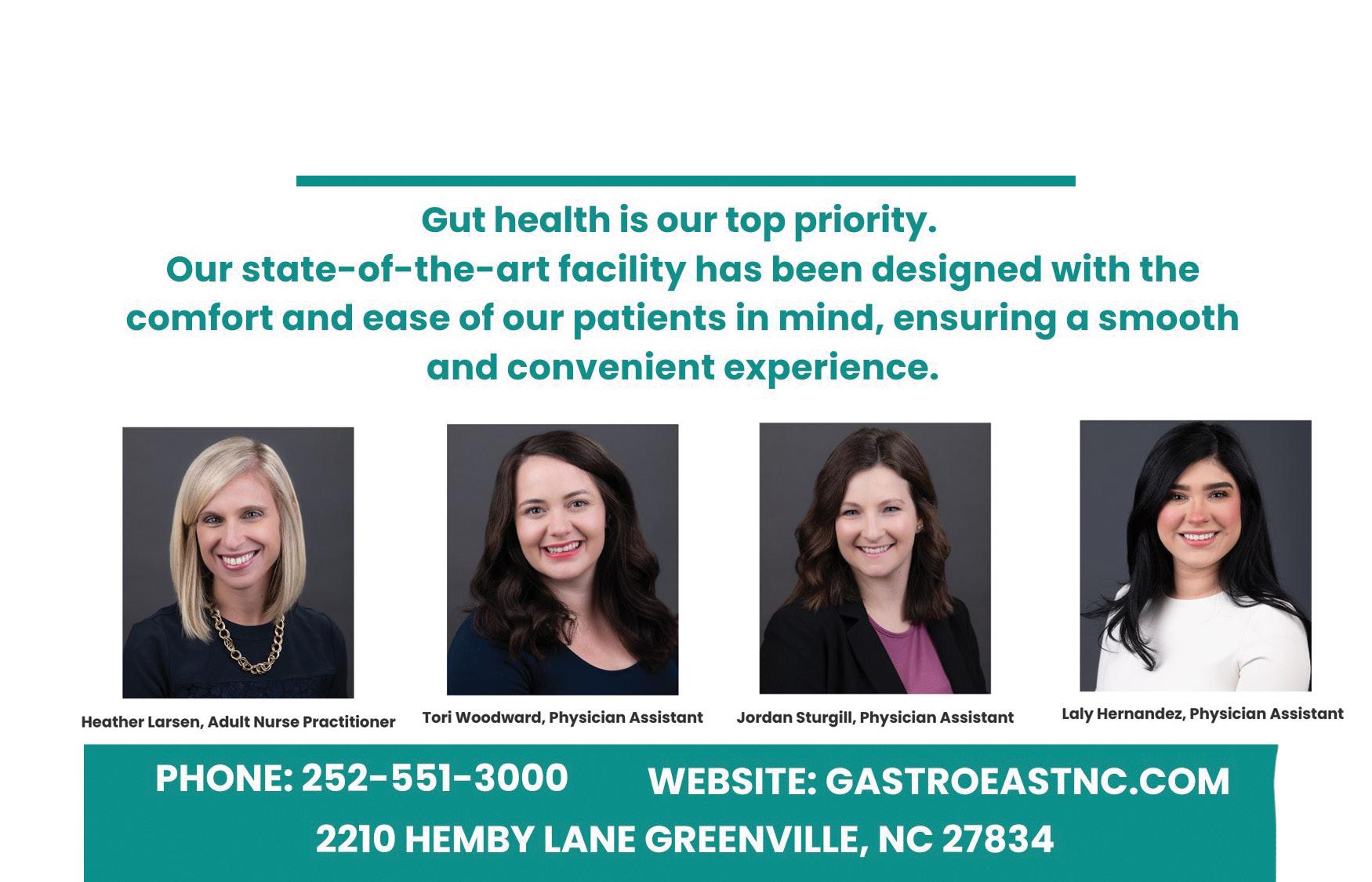




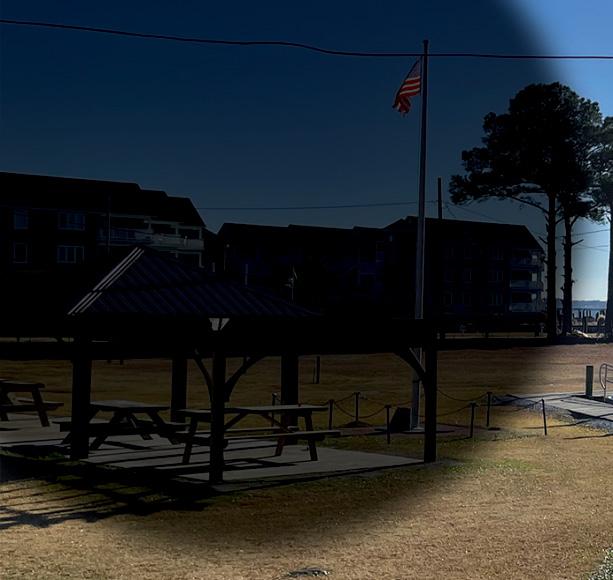
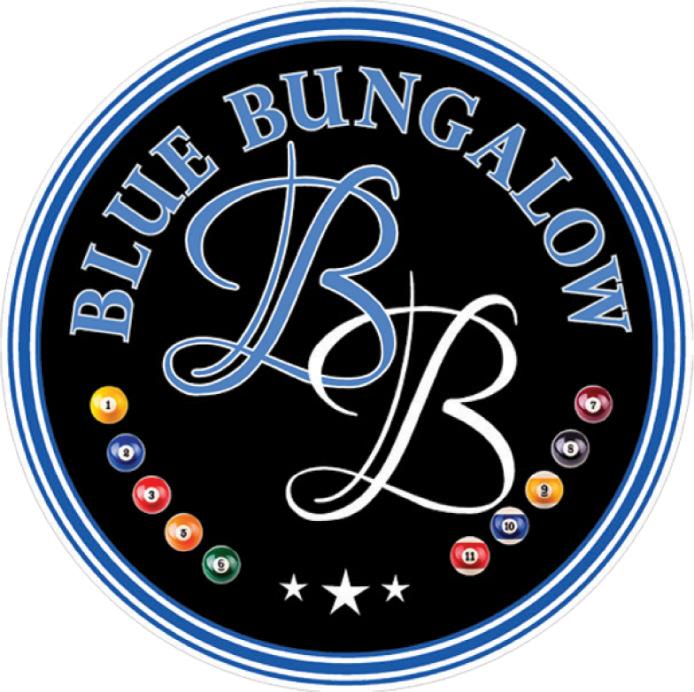
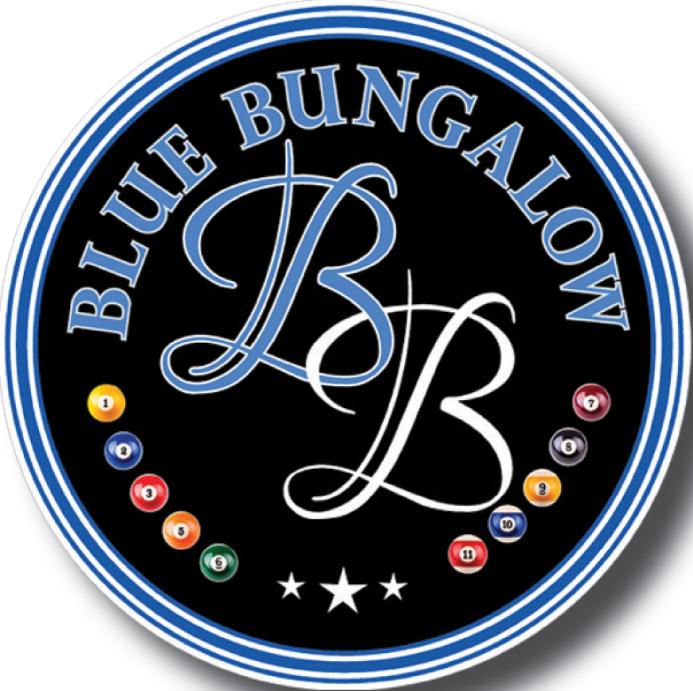






















































































Tell us about your family: My husband Chad and I have been married for eight years, and met while we were living in the Florida Keys. He is from Cleveland and I’m originally from New Hampshire. We moved to Greenville for my husband’s job with WorldCat Boats. Our Sam is six yearsold, he is HIGH energy and is the most social and kind boy. He loves his family and friends, superheros, Nerf battles and French fries.
Hobbies: We are huge sports fans and rarely watch any TV that’s not sports related. I grew up in a hockey family and my husband was a baseball player, so typically we are watching or at a game. We also play golf together as a family on weekends. I fell in love with running after I finished treatment - never a “runner”, I told my chemo nurses I was going to run a half marathon after treatment and I had to stay true to my word. I actually loved training for it, showing myself that I could do something I didn’t know if I could do.

Favorite place to vacation? Cape Cod. I grew up there during the summers of my childhood with my grandparents - it’s such a stunning place in the summer. It’s the best place to go for July 4th. Talk about American pride.

What is a quote that defines your life or that resonates with you? “Though the mountain may crumble, you will not”- Isaiah 54:10
Favorite outfit: Gym clothes or jeans and a sweatshirt
Favorite movie: The Departed
Favorite place to visit and why? Boston, MA - it’s home to me. It’s a beautiful city with so much to do and so much history. The energy the city has is electric, especially when the home teams are winning!





With Easter nRadiologists, you gain the strength of the region s rst ACR Designated Comprehensive Breast Imaging Center and the team of professionals that have worked so hardtoear nthat distinction. Everything we do—from the state-of-the-art equipment we maintain to the additional, subspecialized training of our doctors—is designed to give you the best chance at early detection and the opportunity to beat this disease.
For your next breast screening, choose Easter nRadiologists and put easter nNorth Carolina’sstrongest team of breast health professionals in your cor ner!


For alocation near you, visit easter nrad.com.





er…